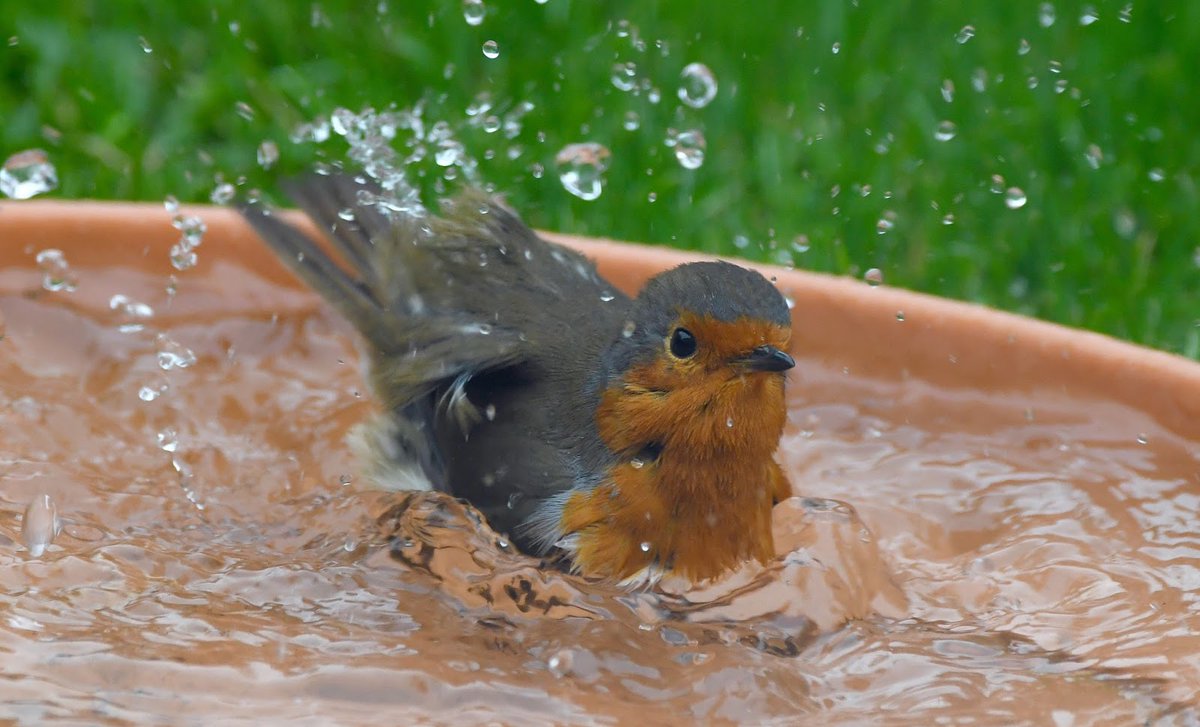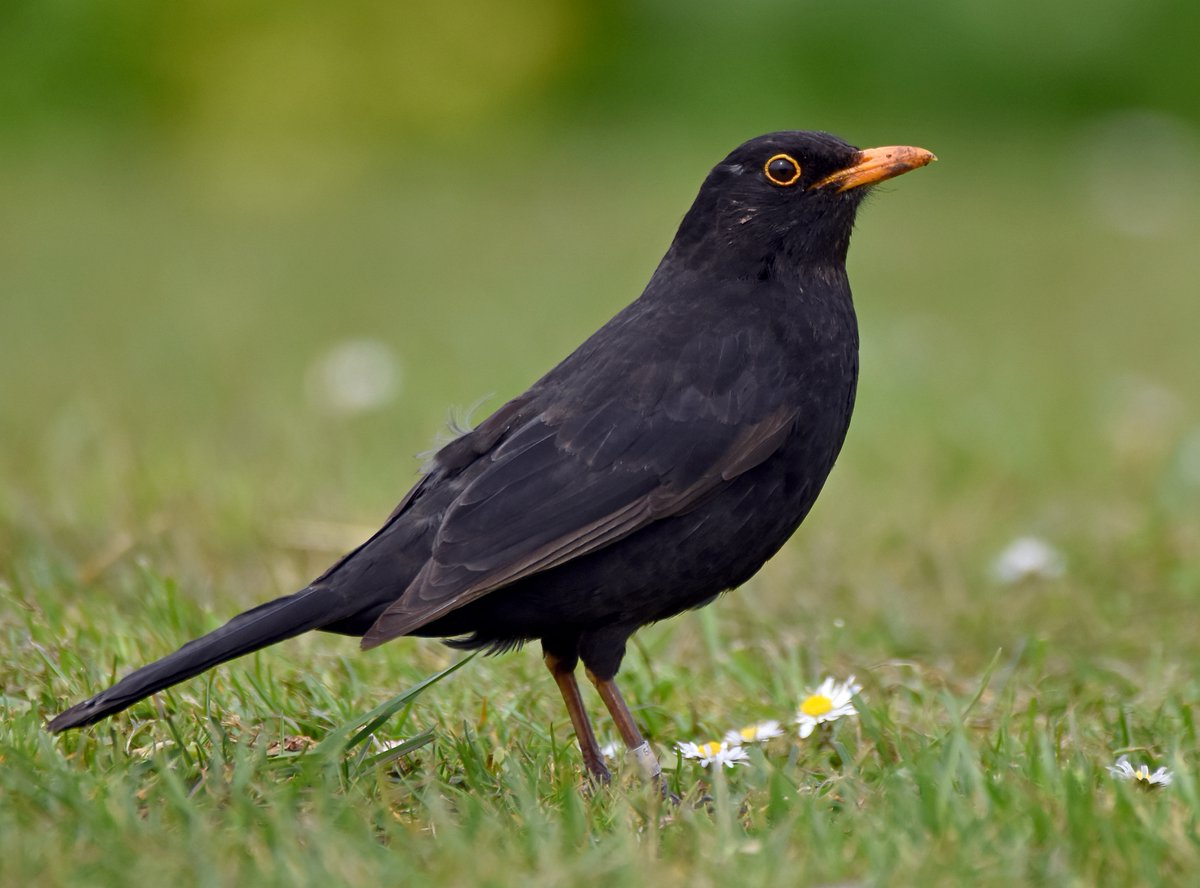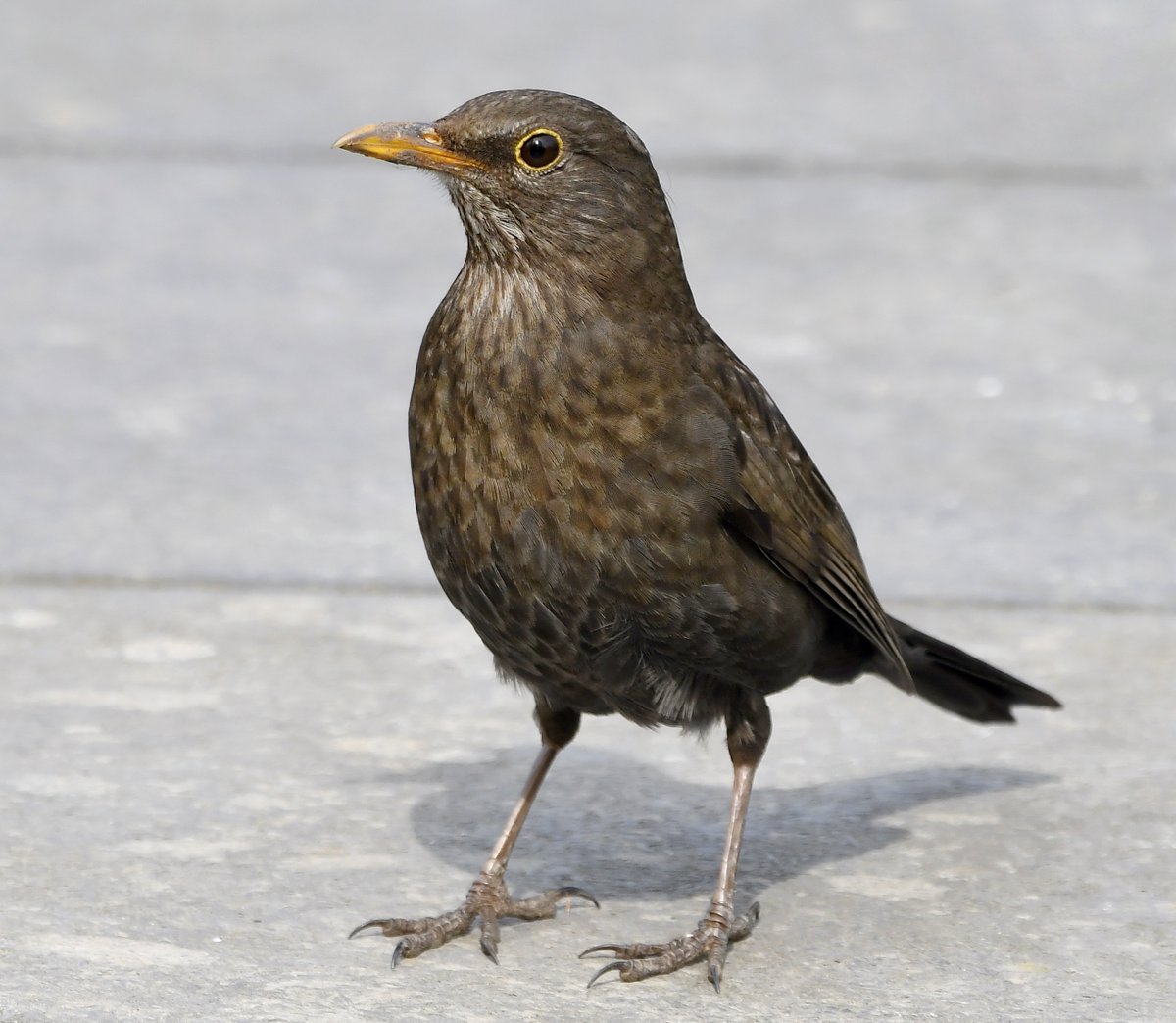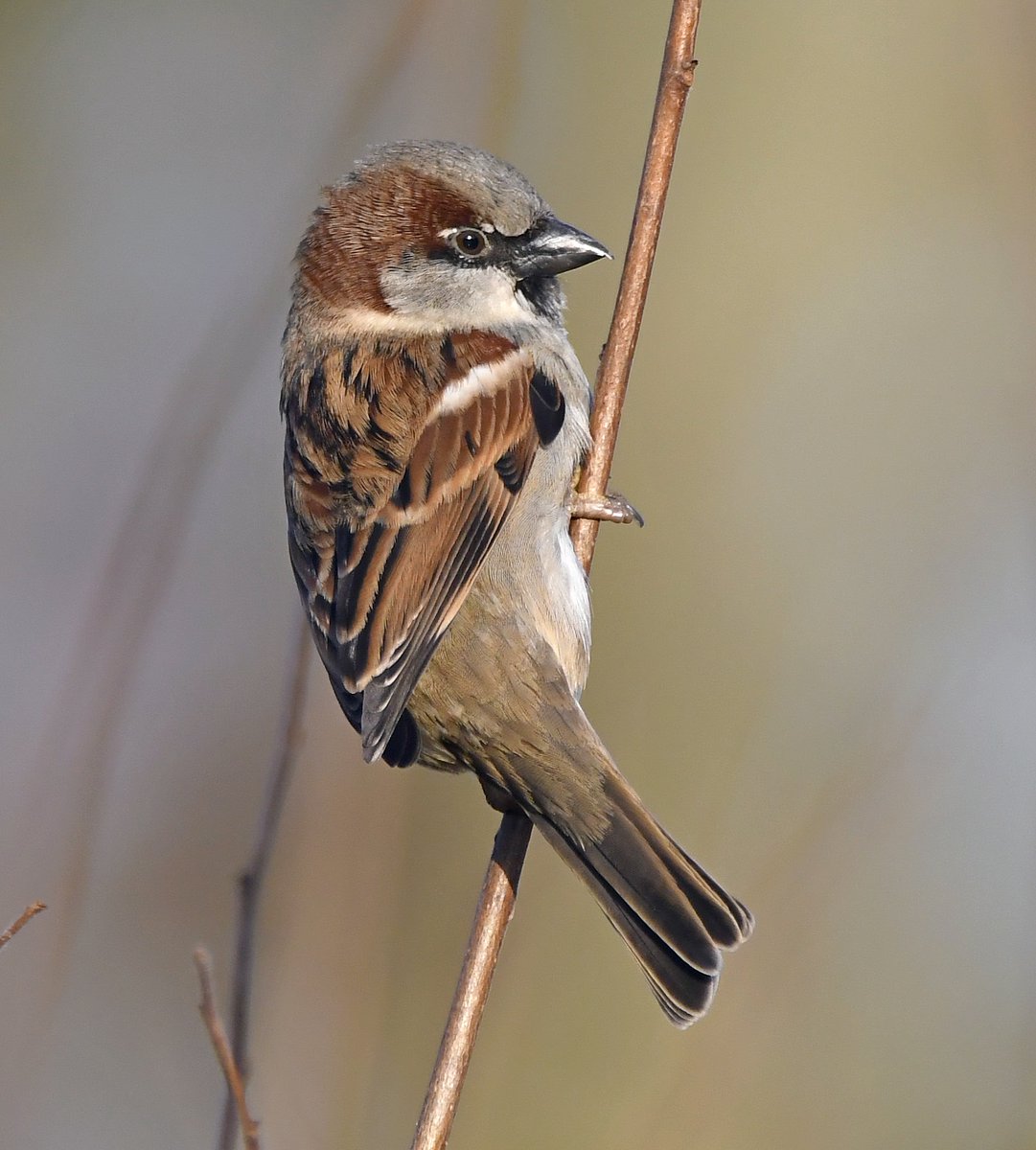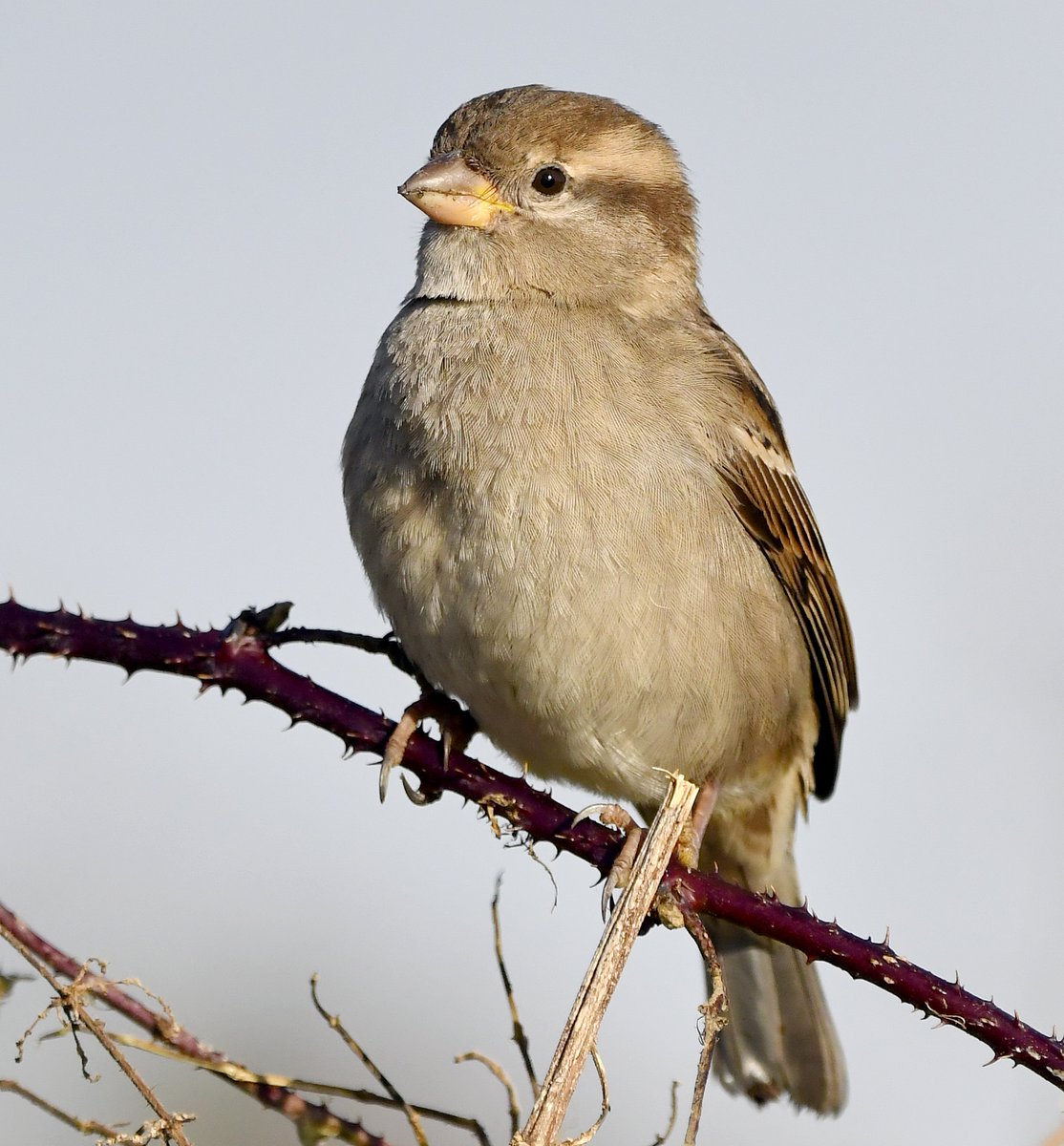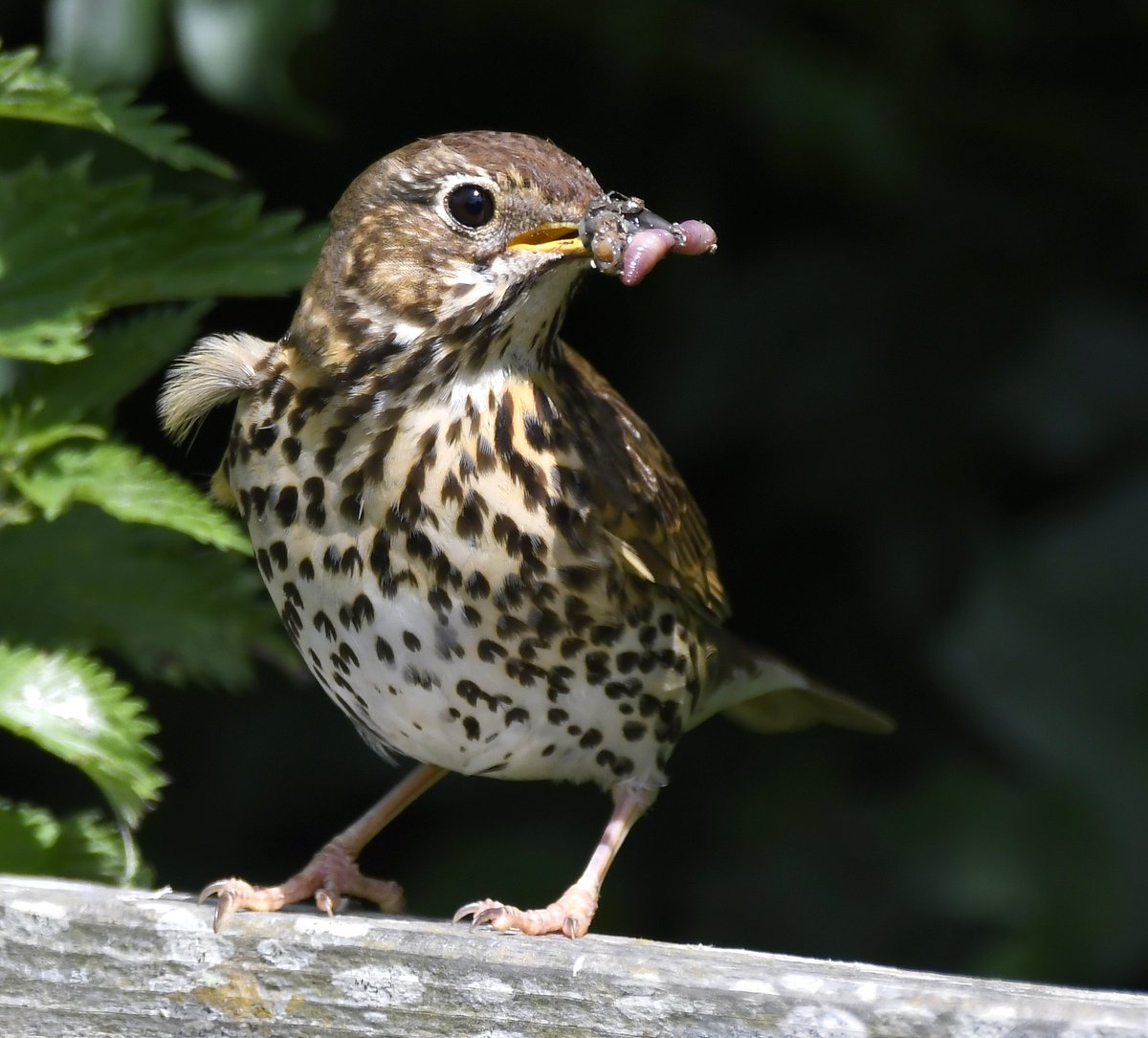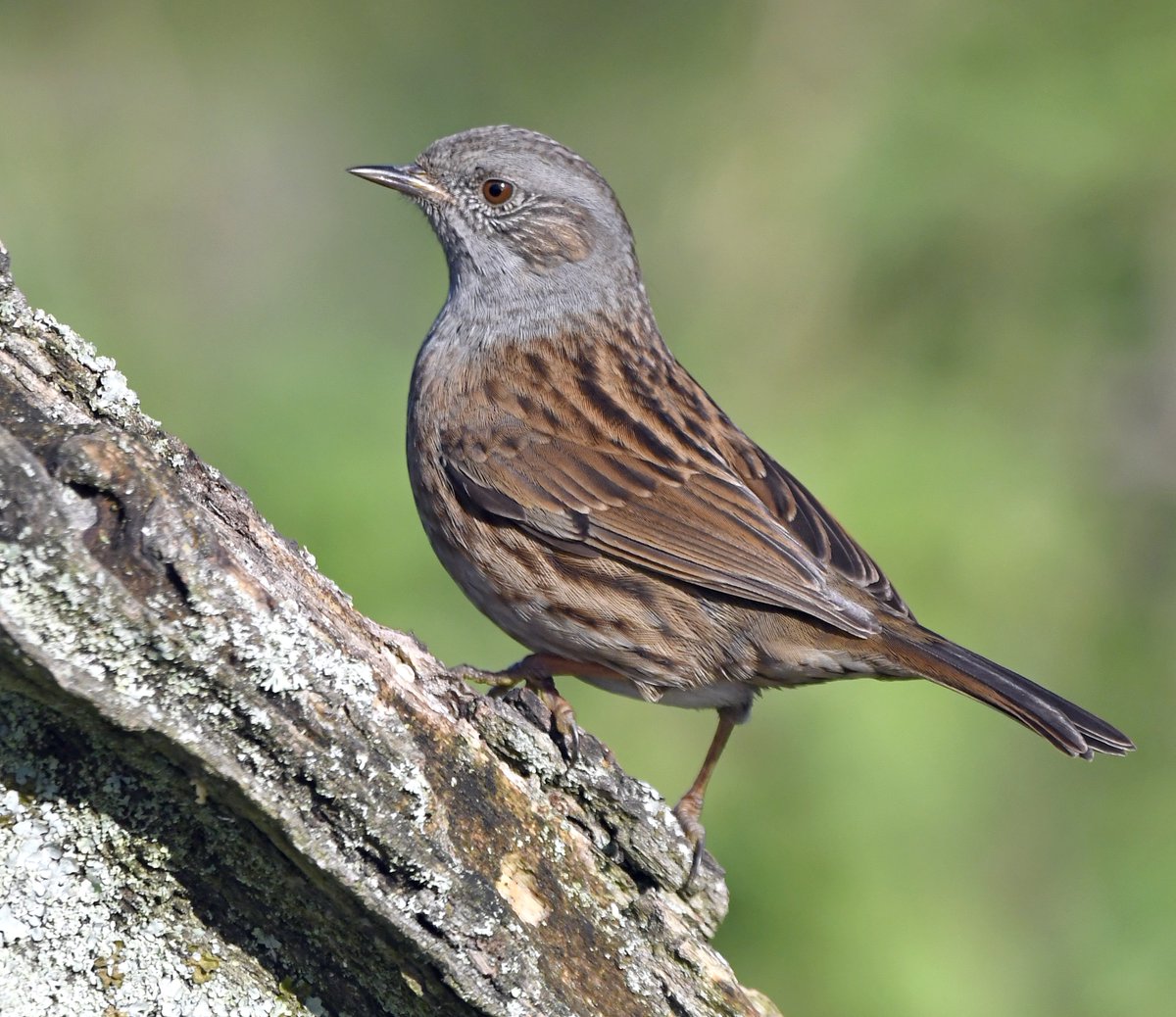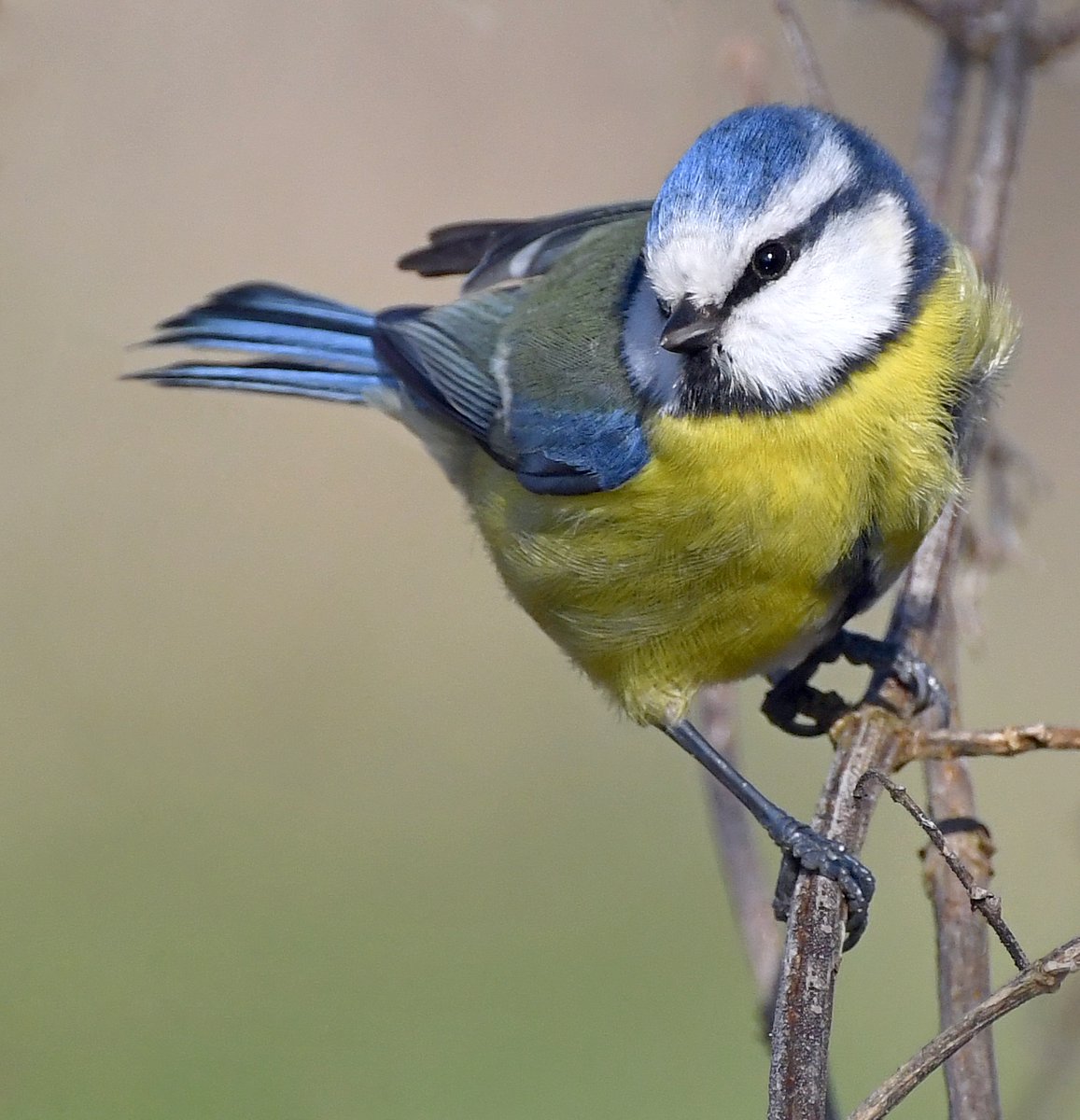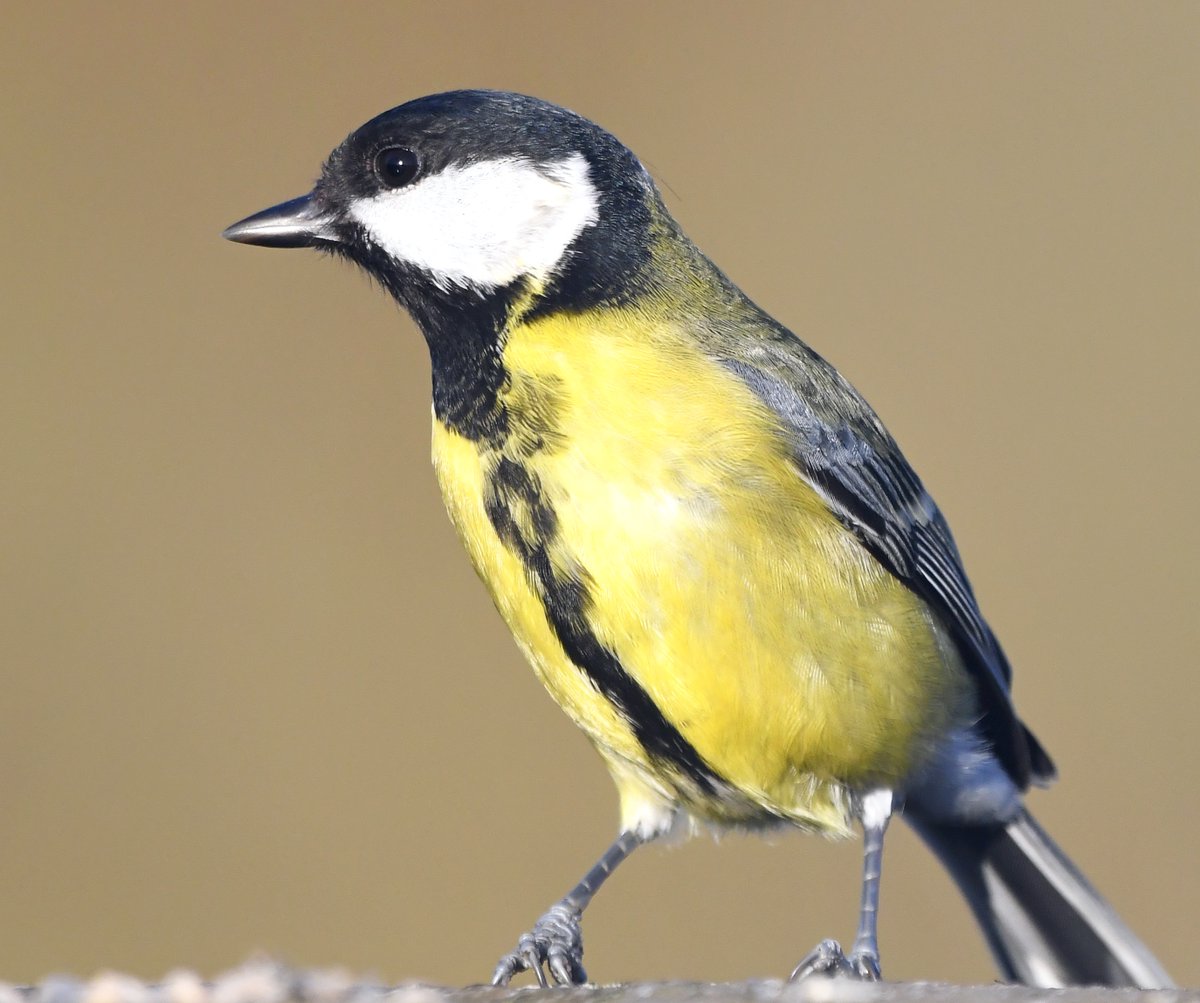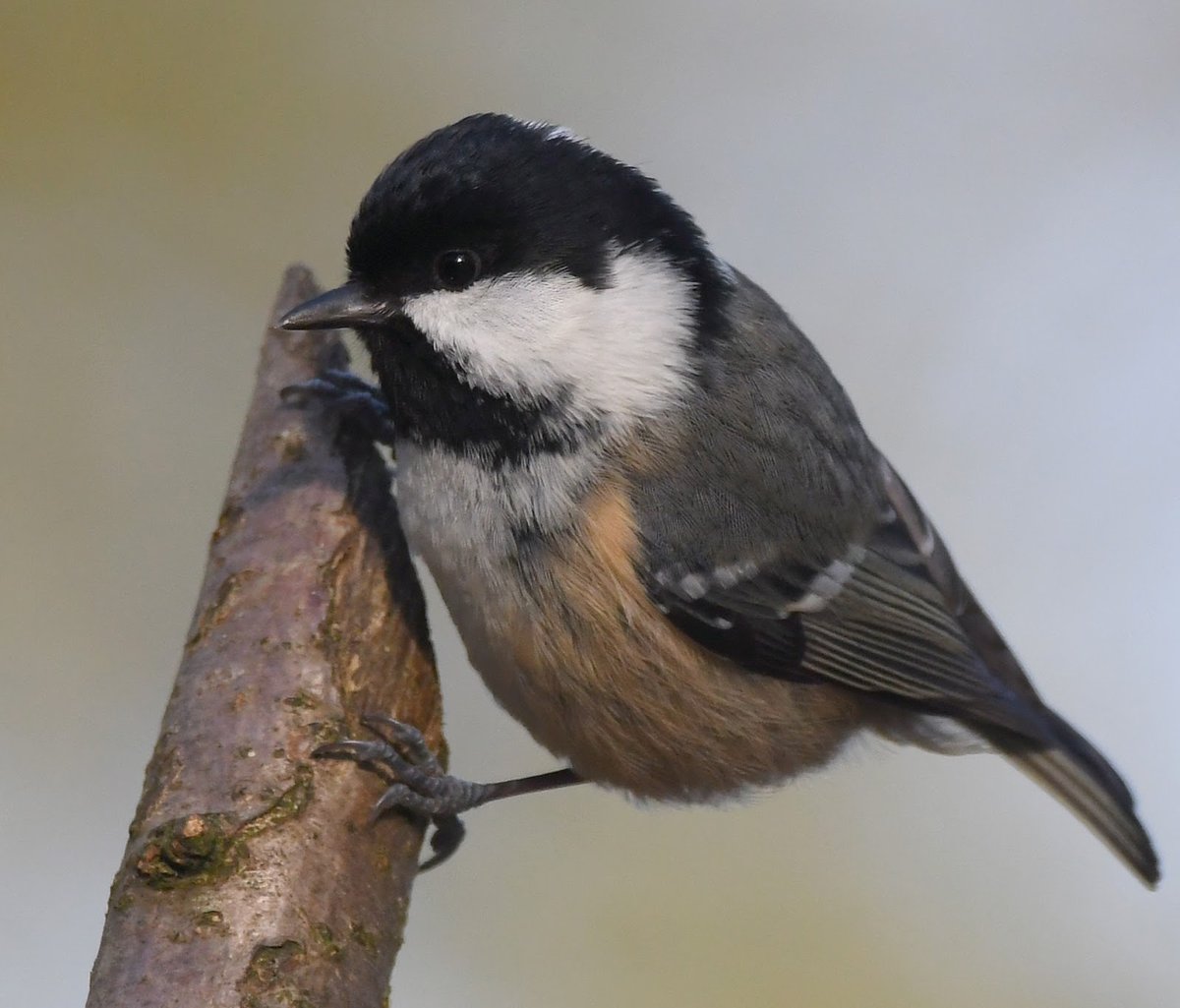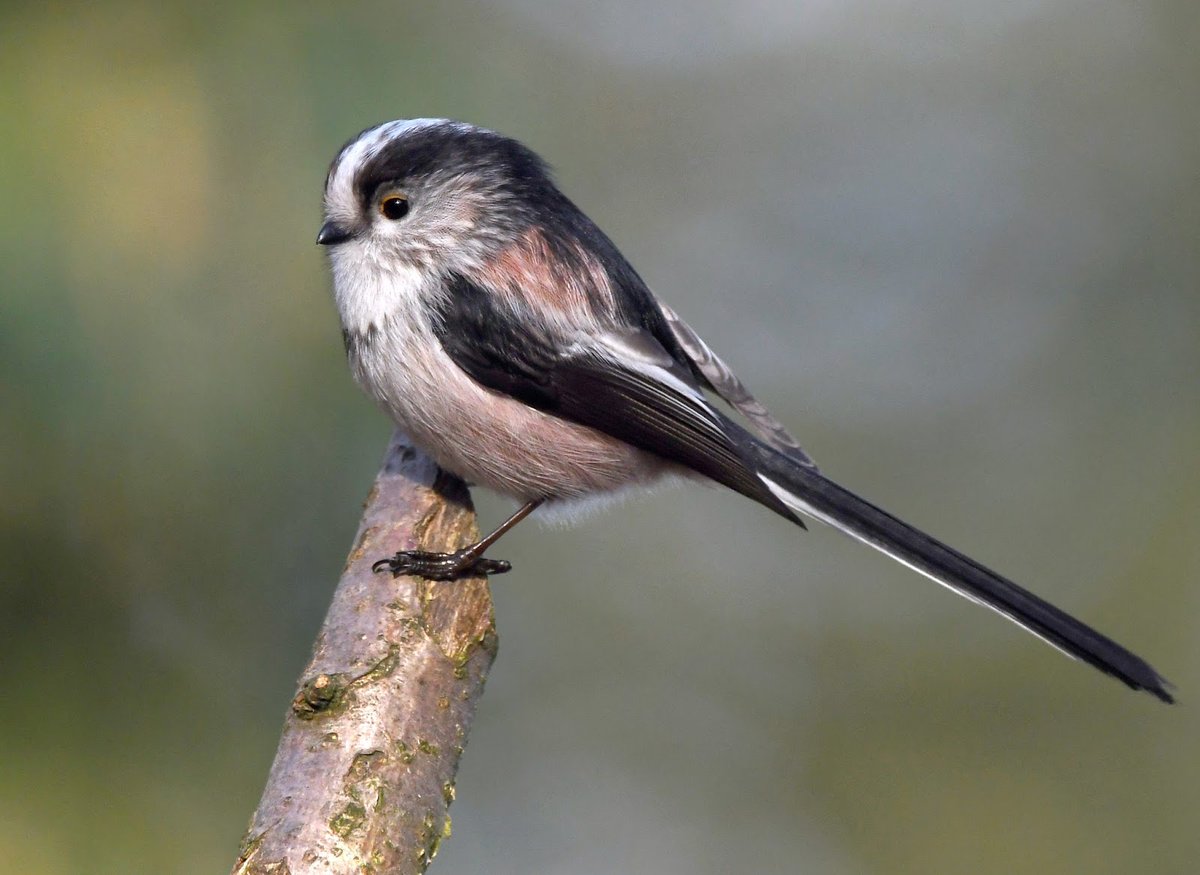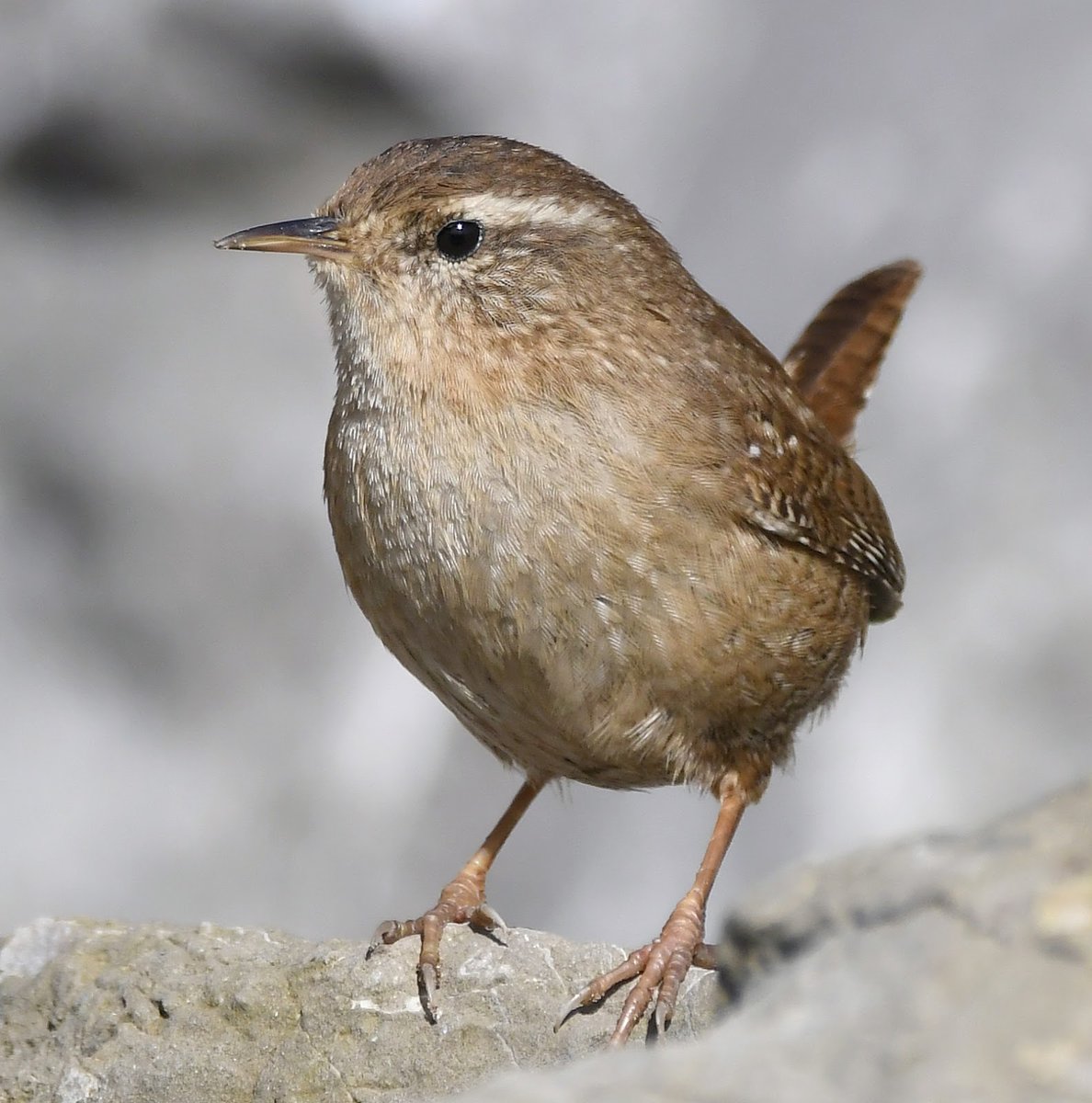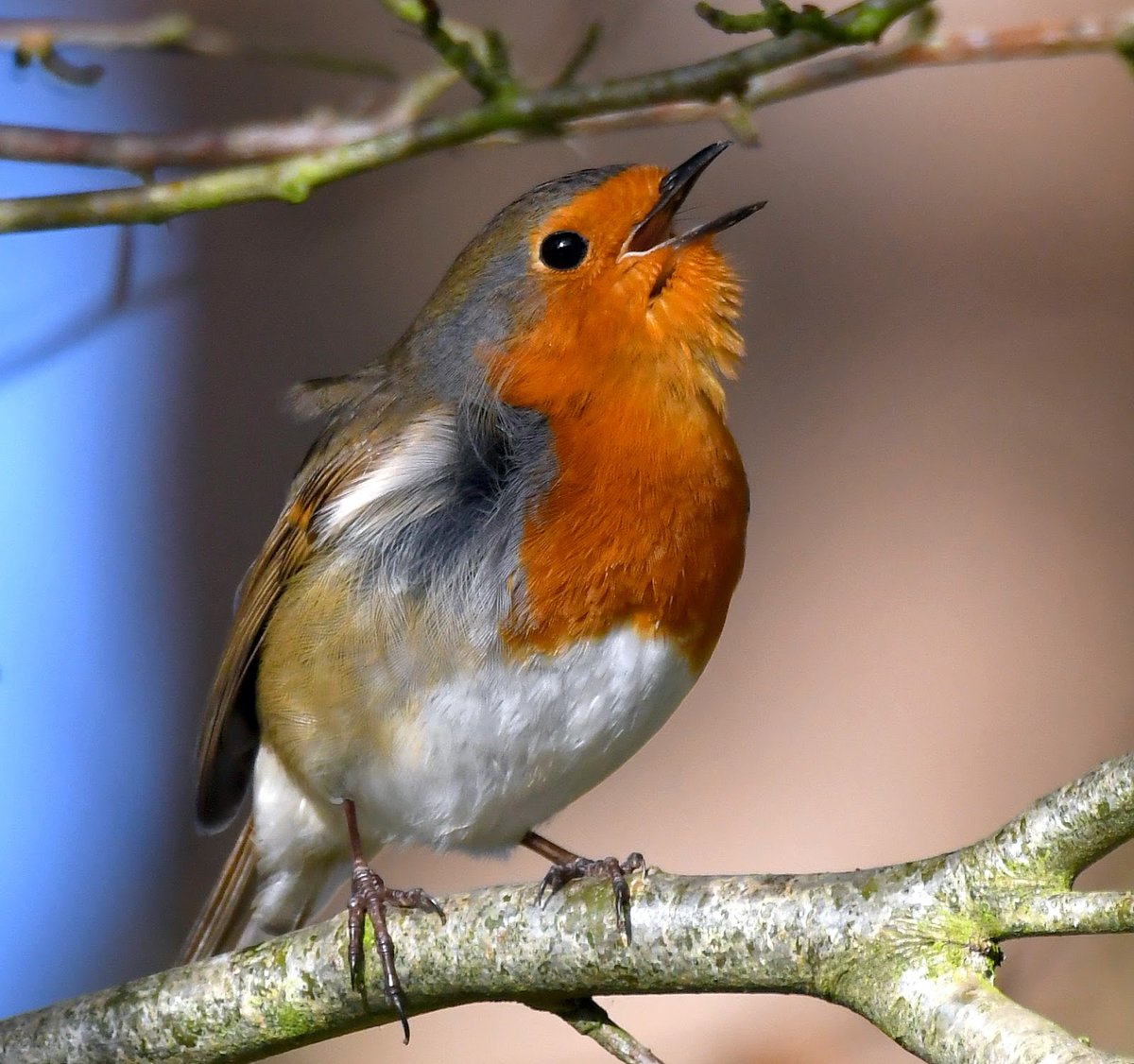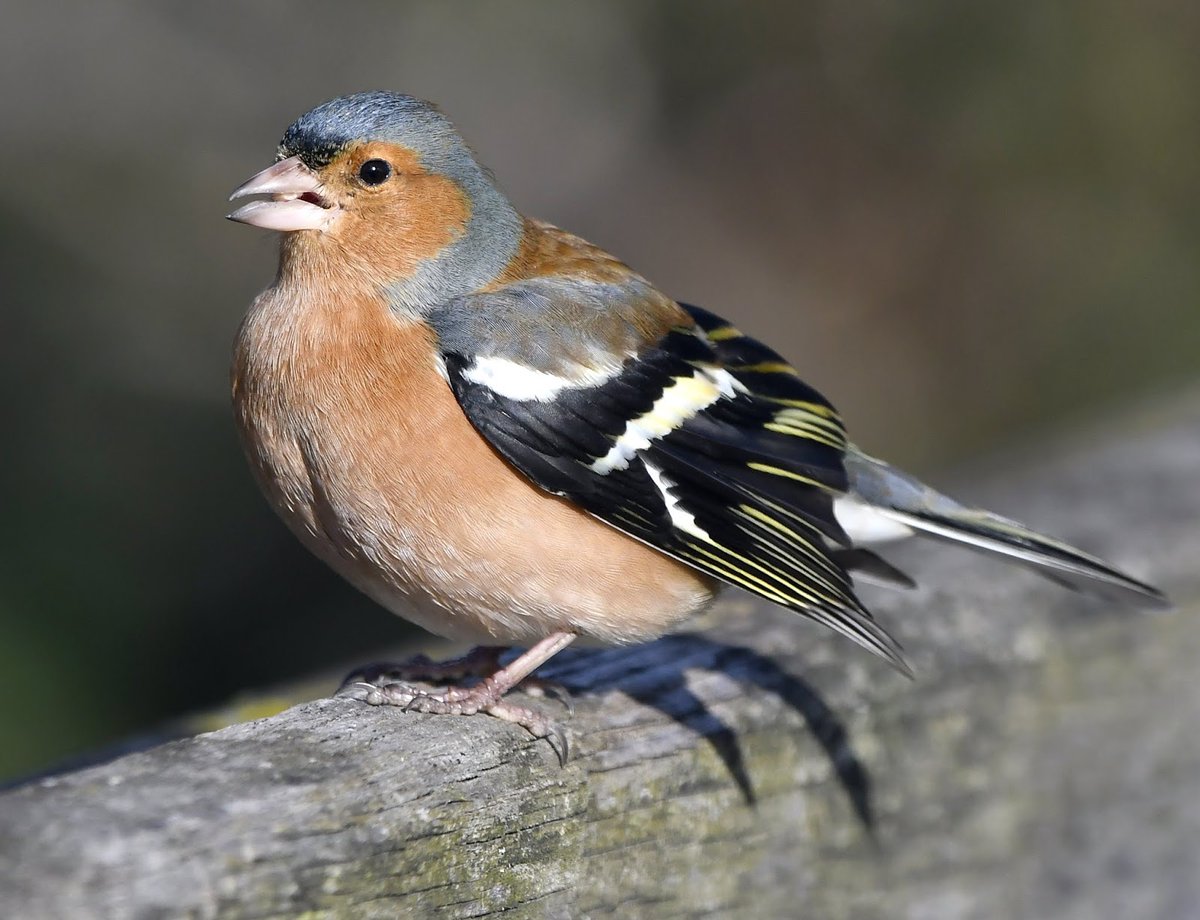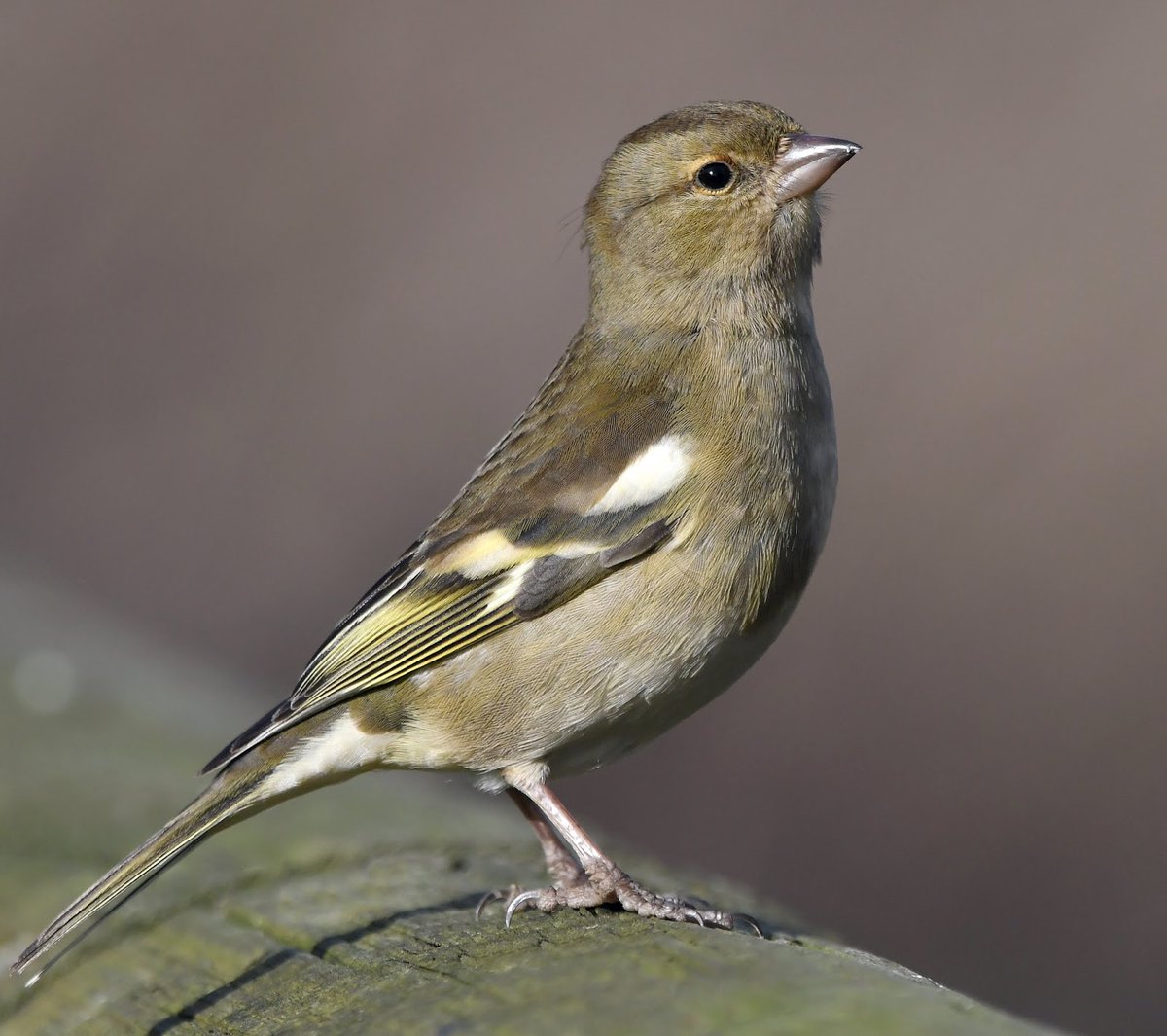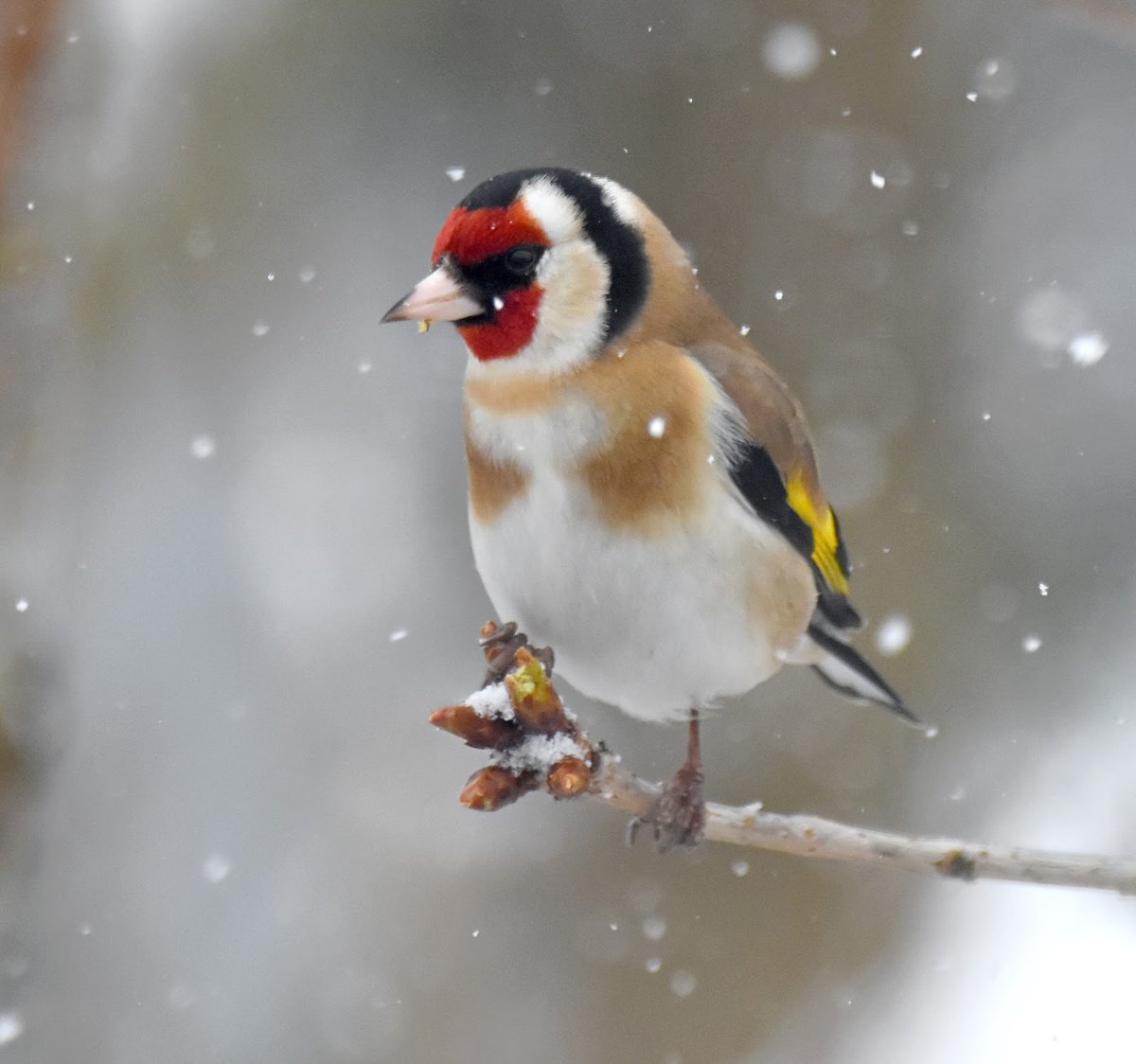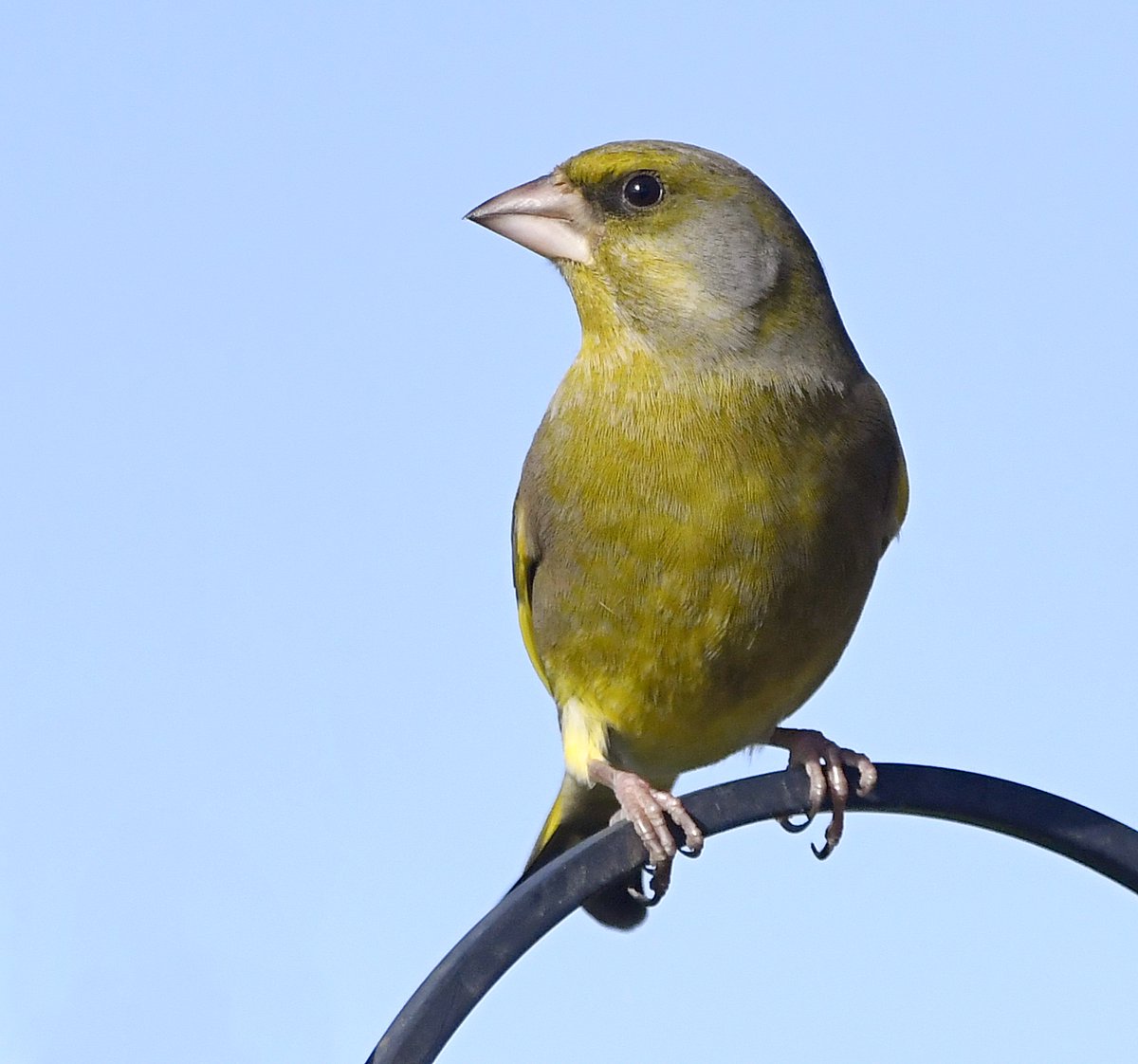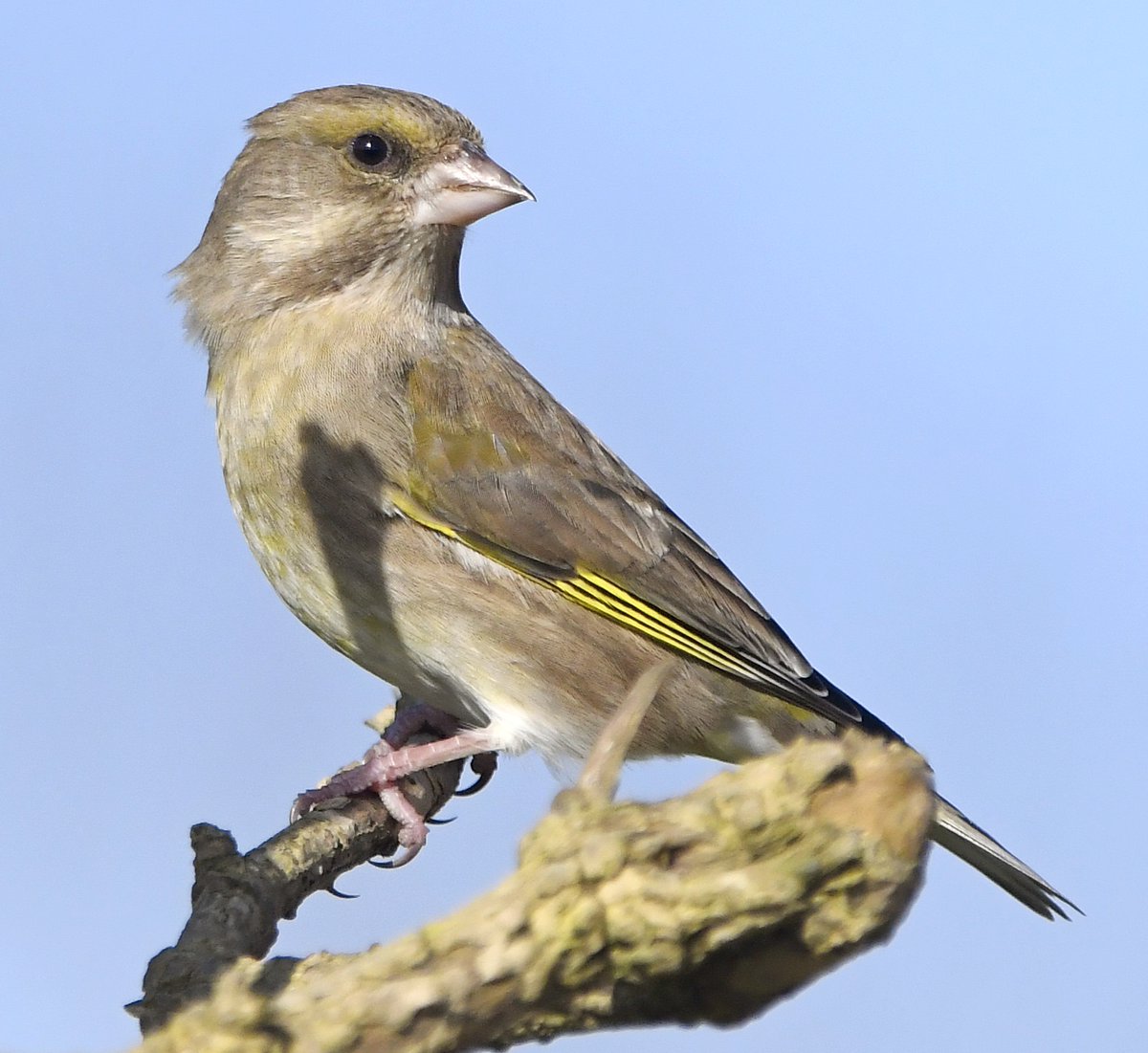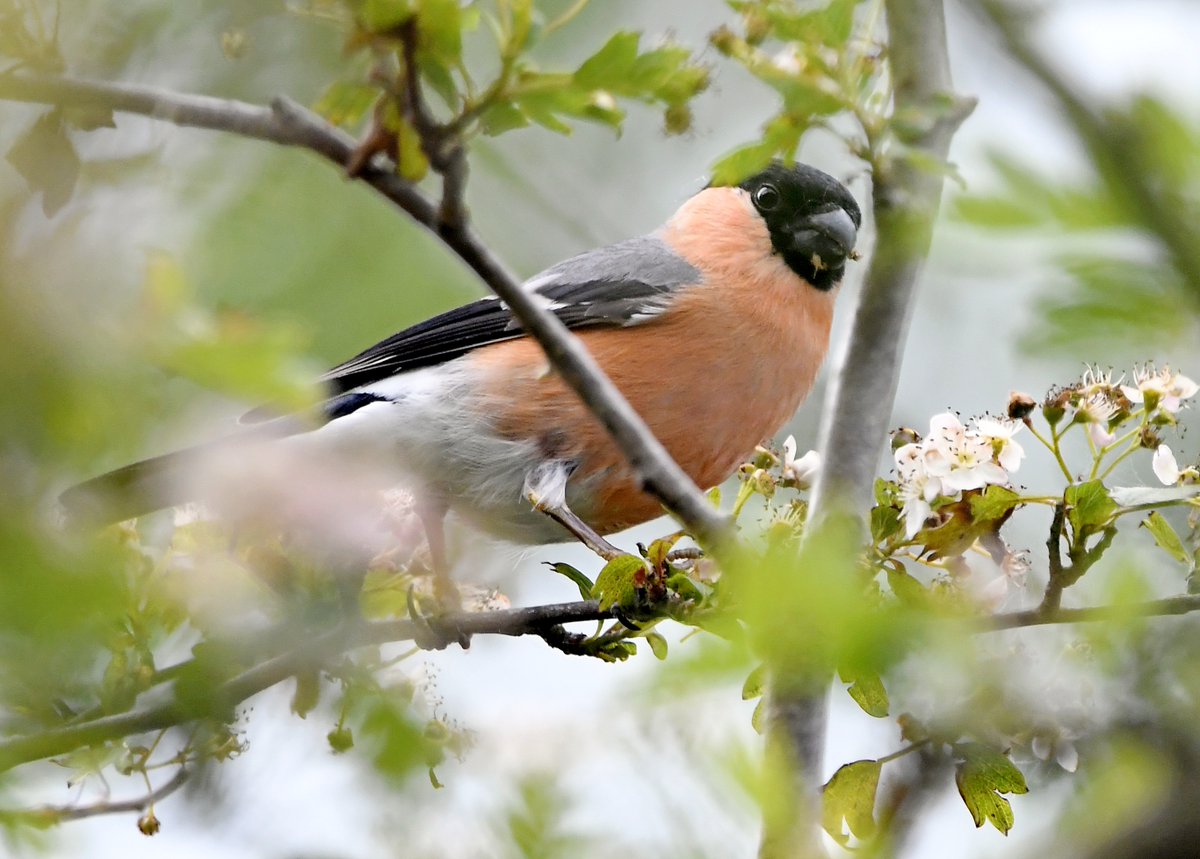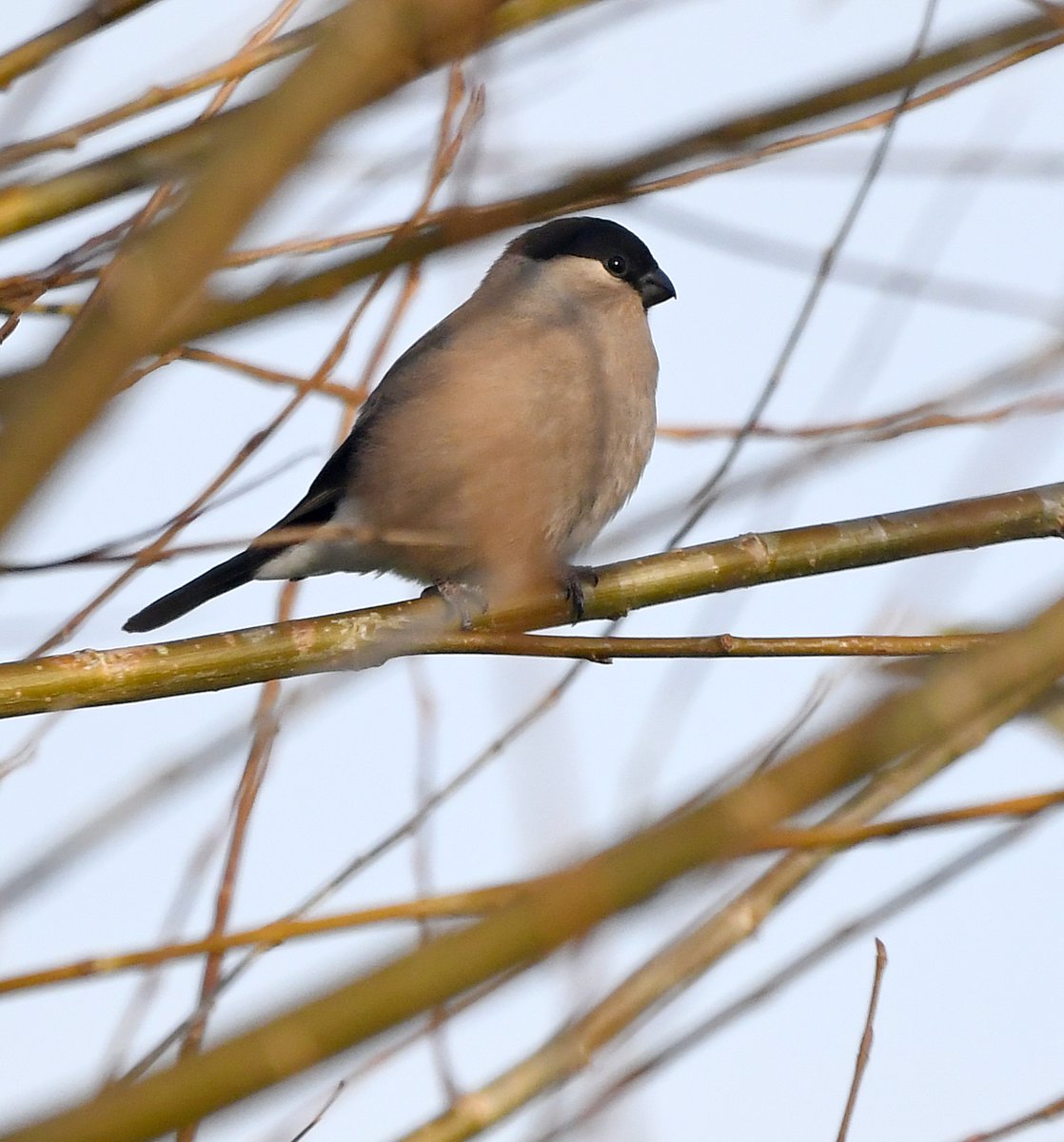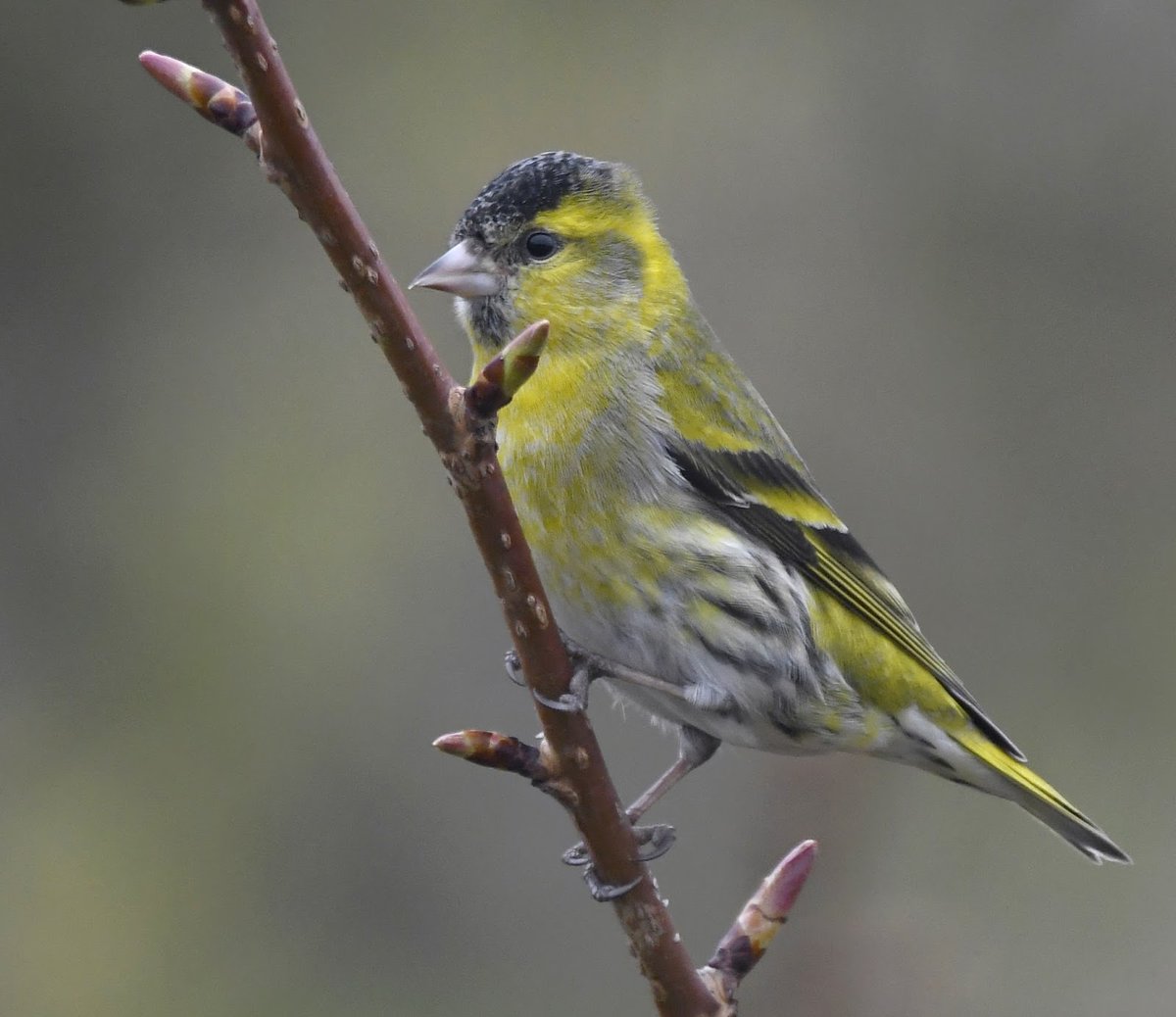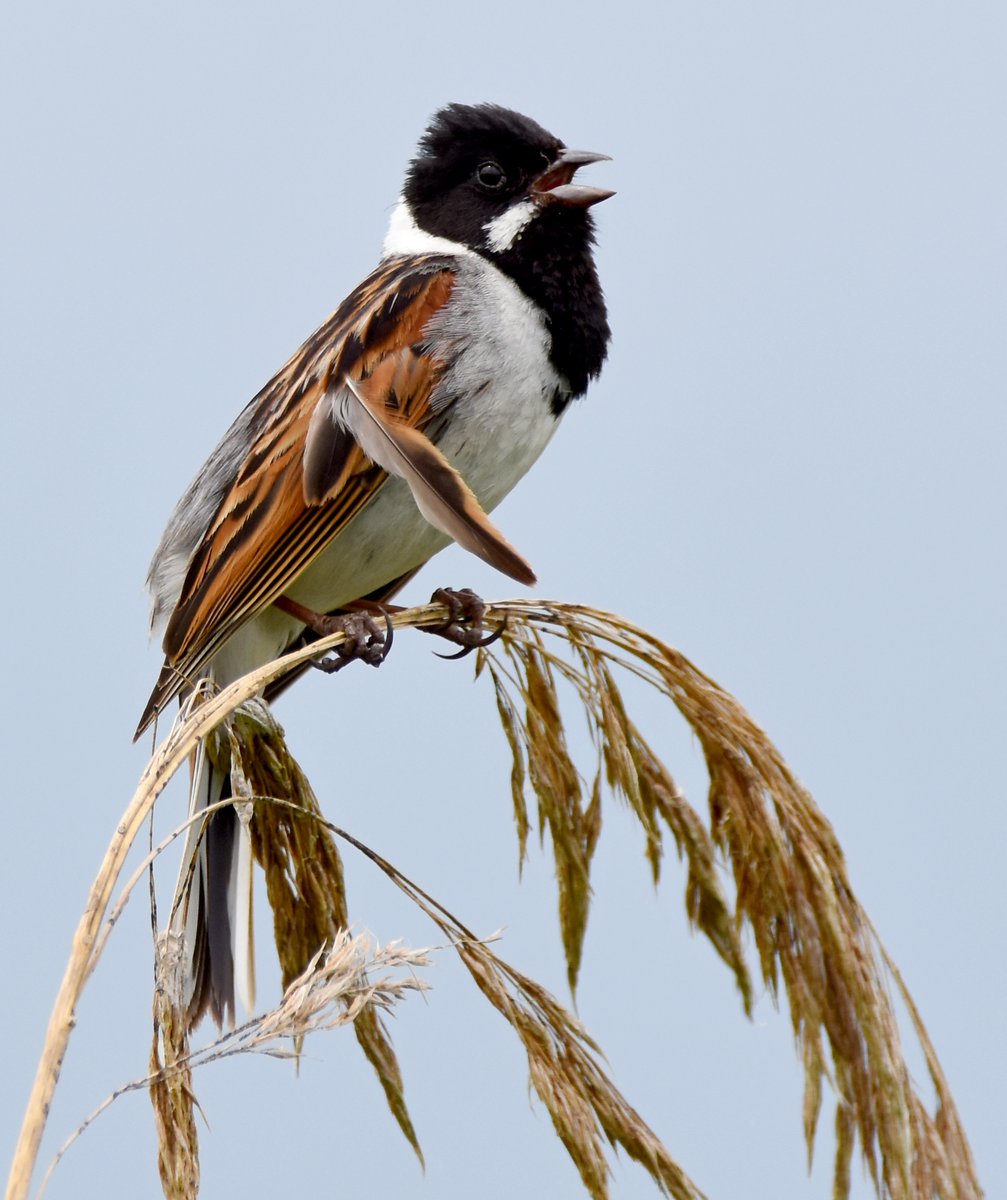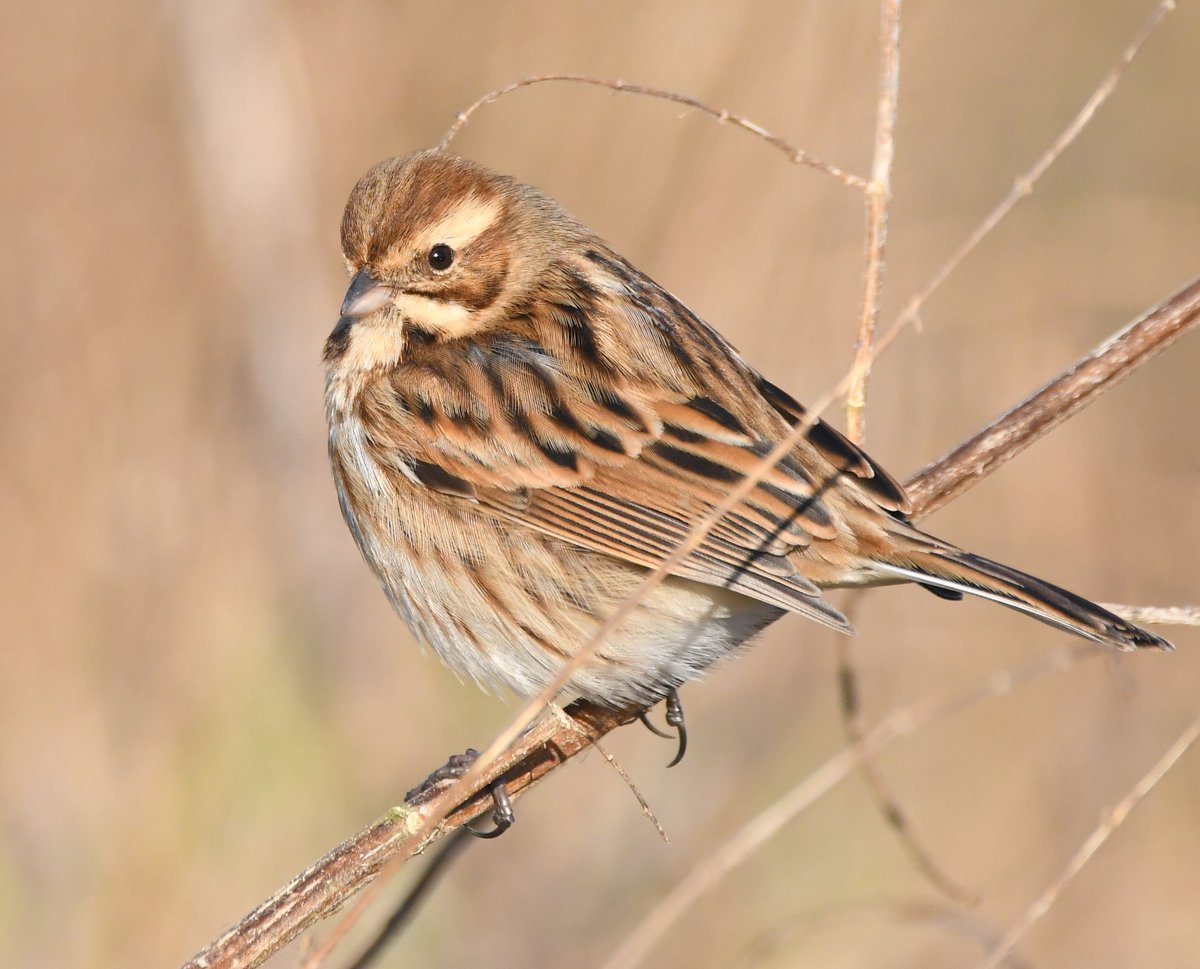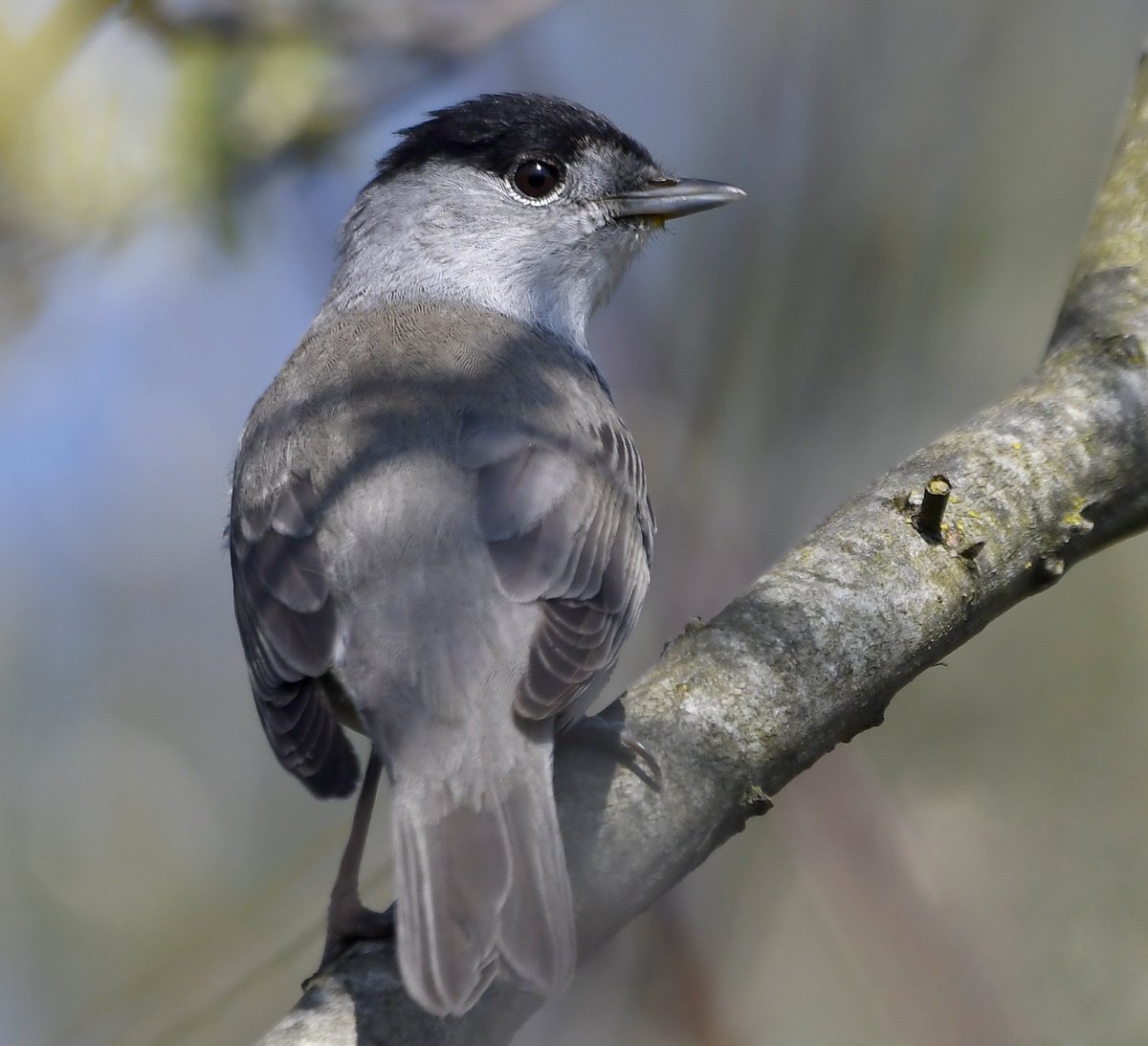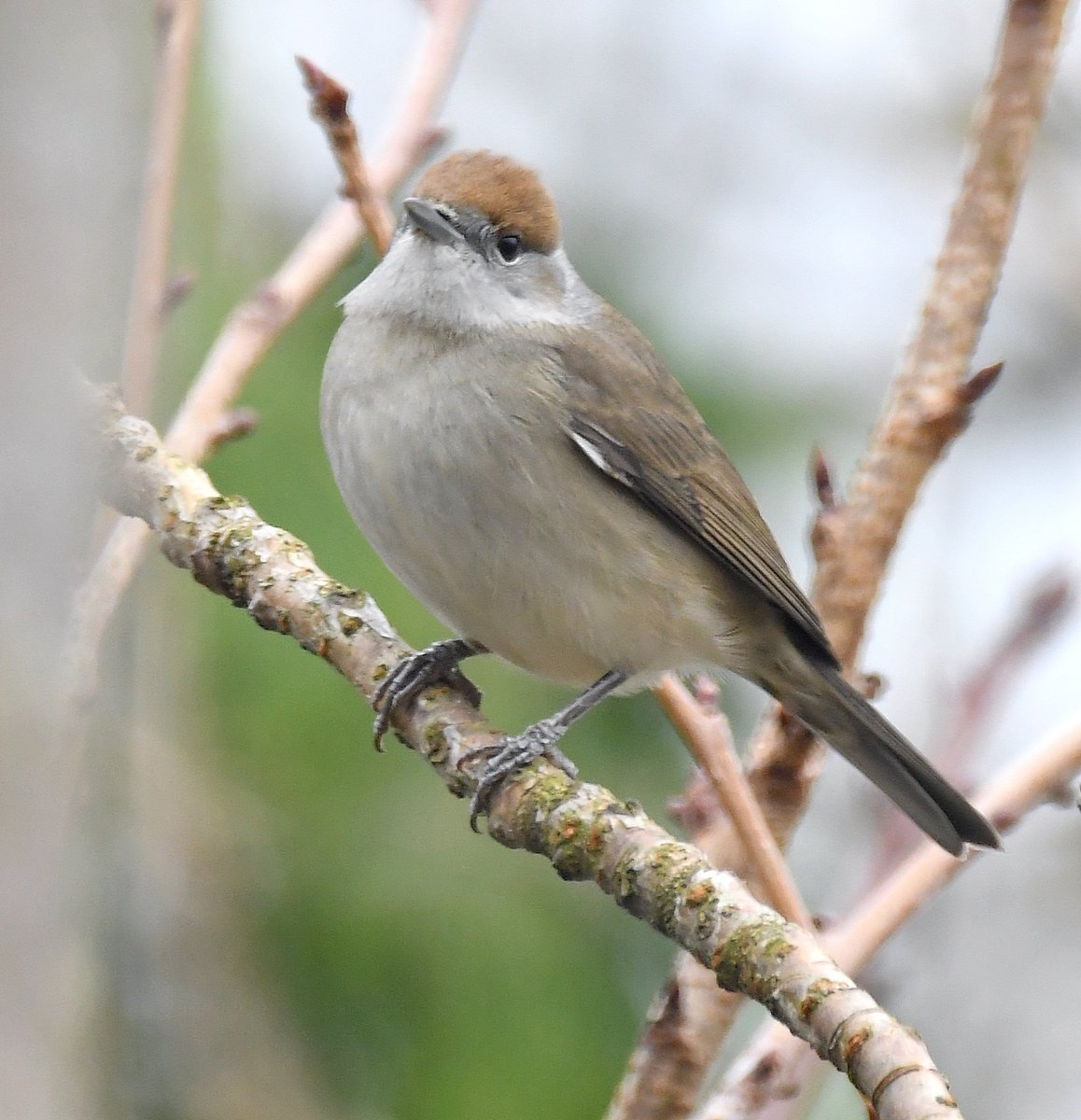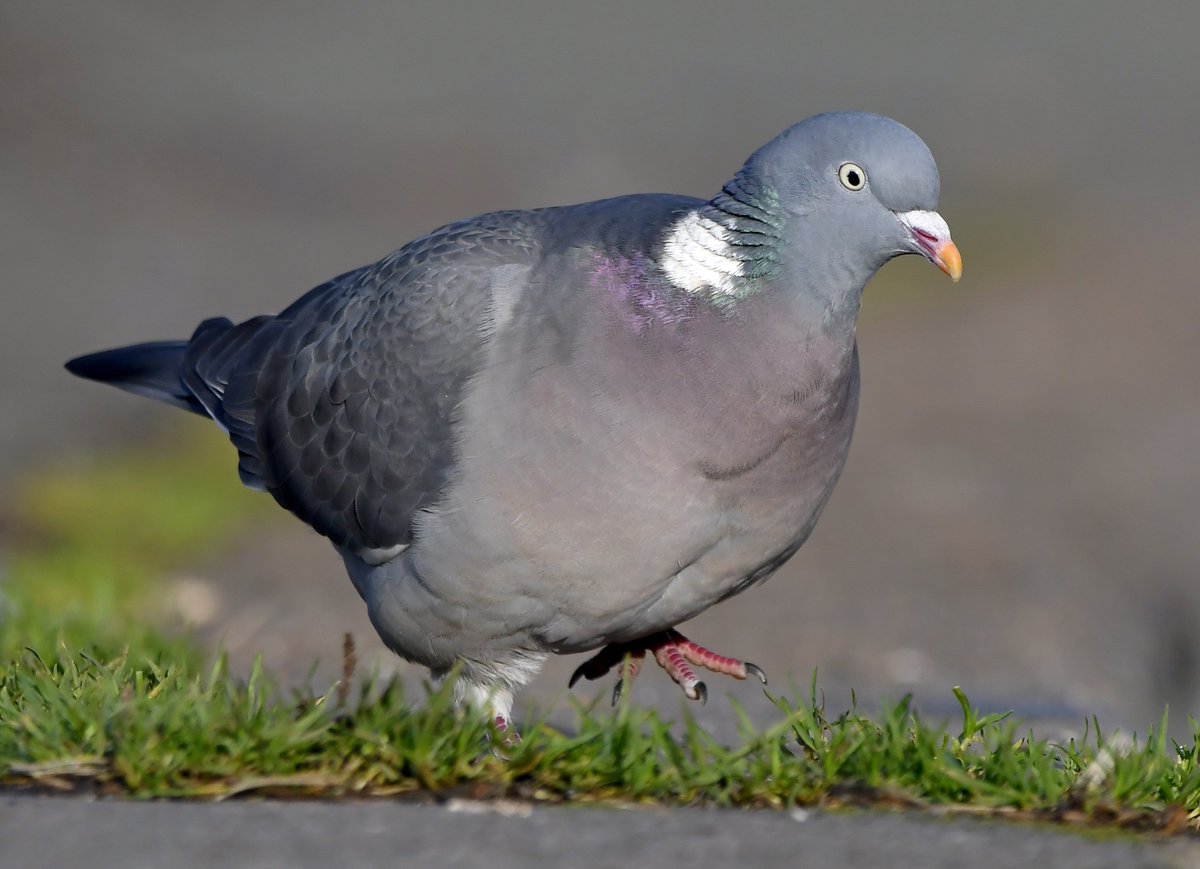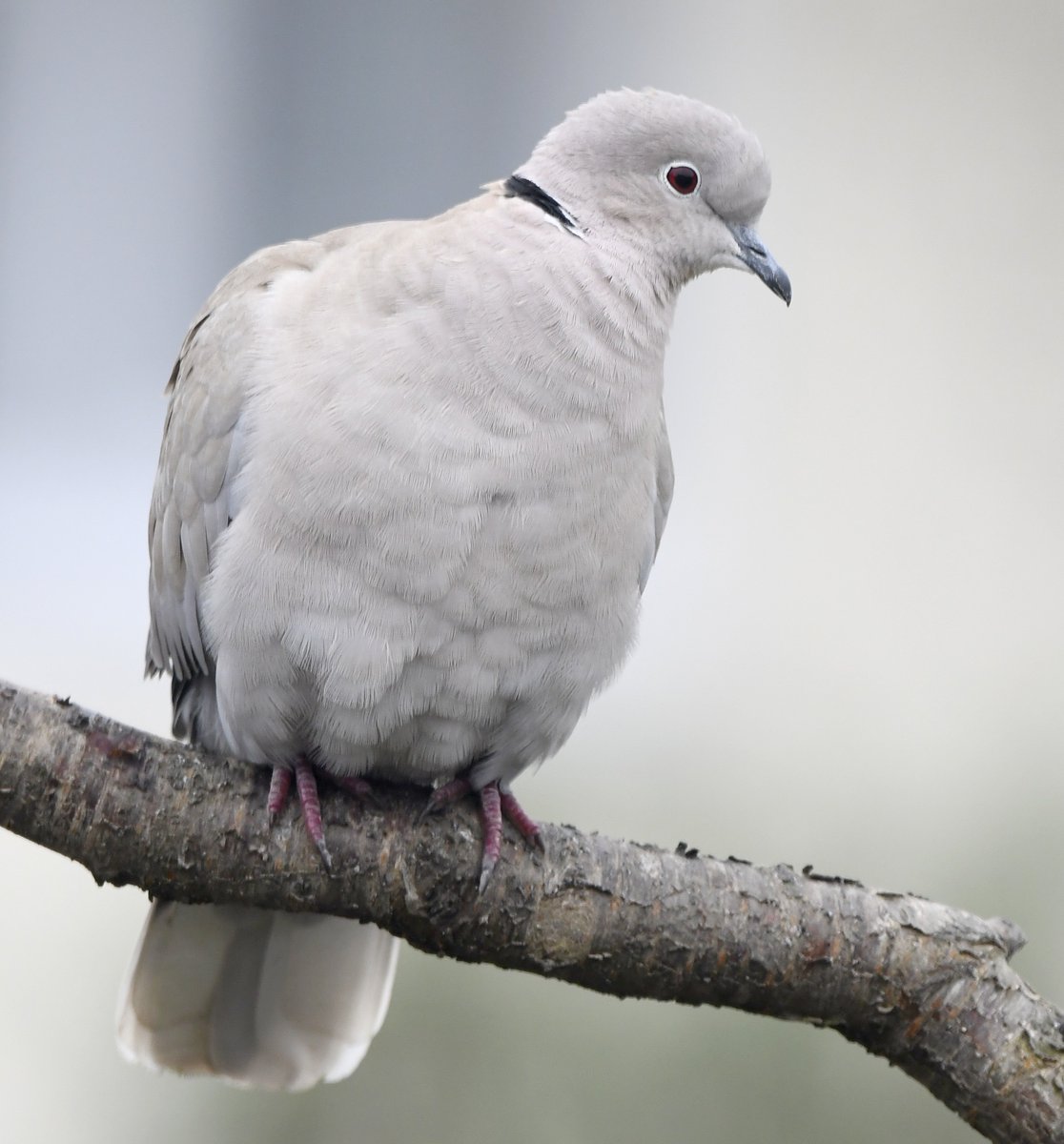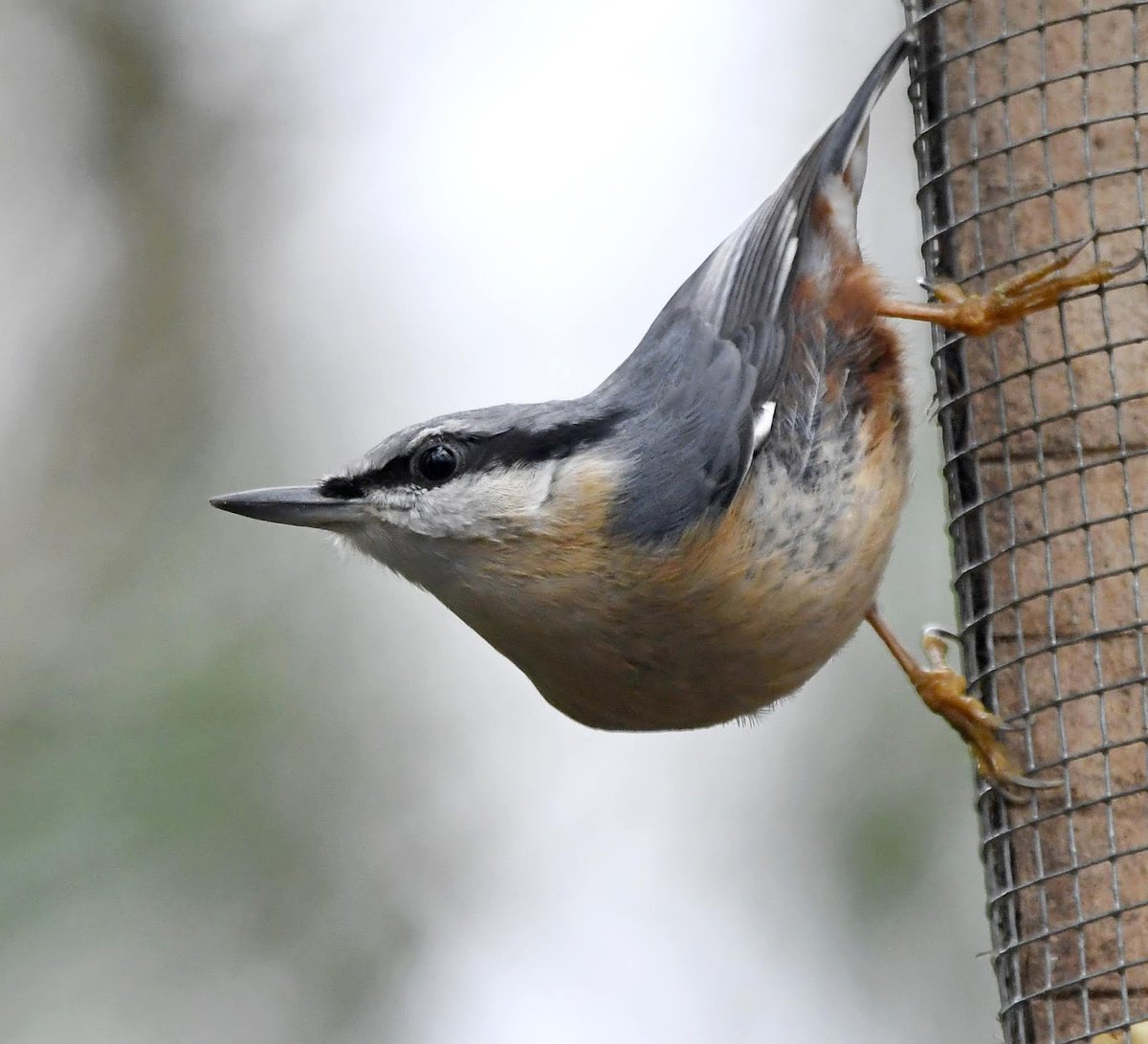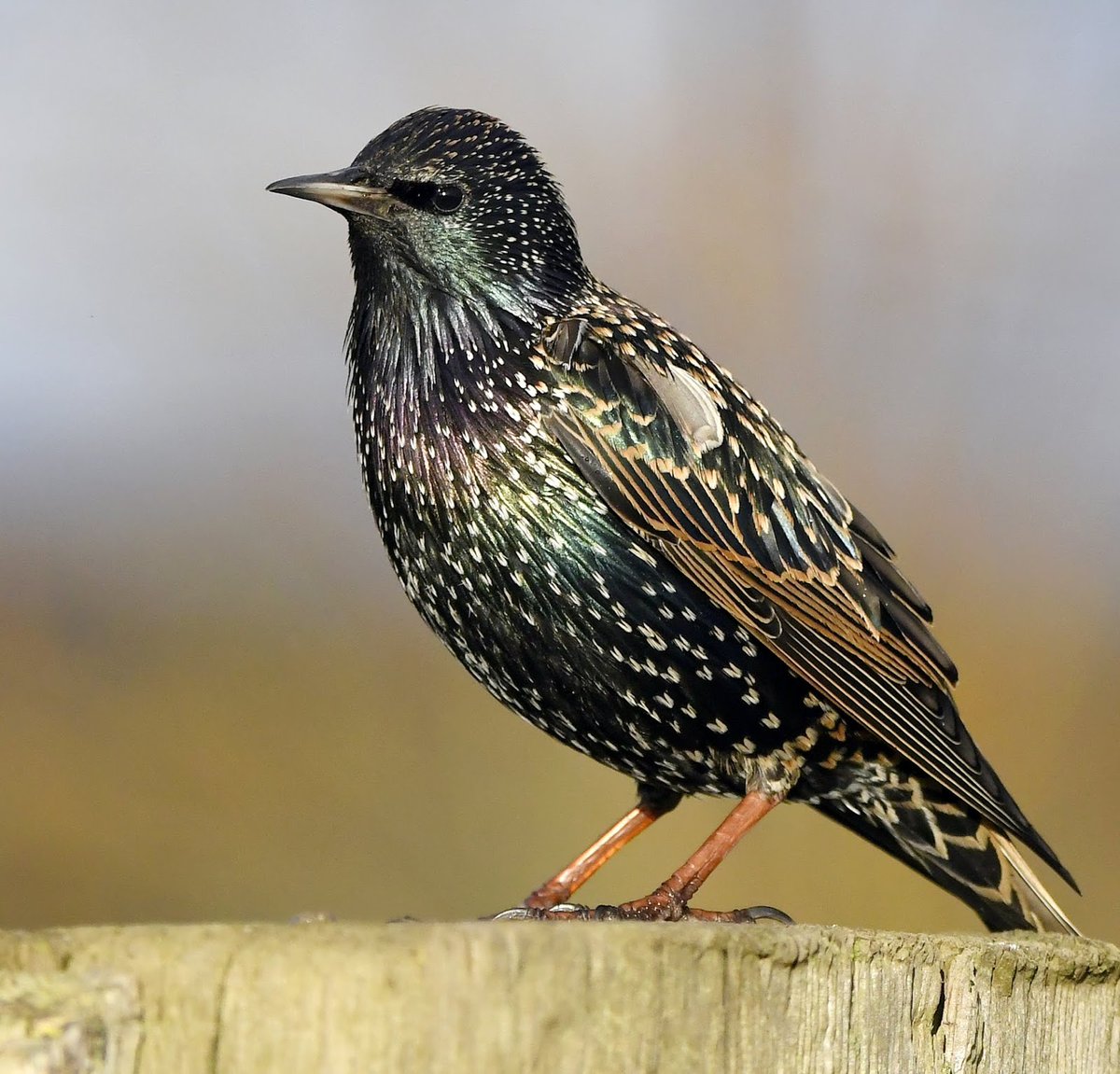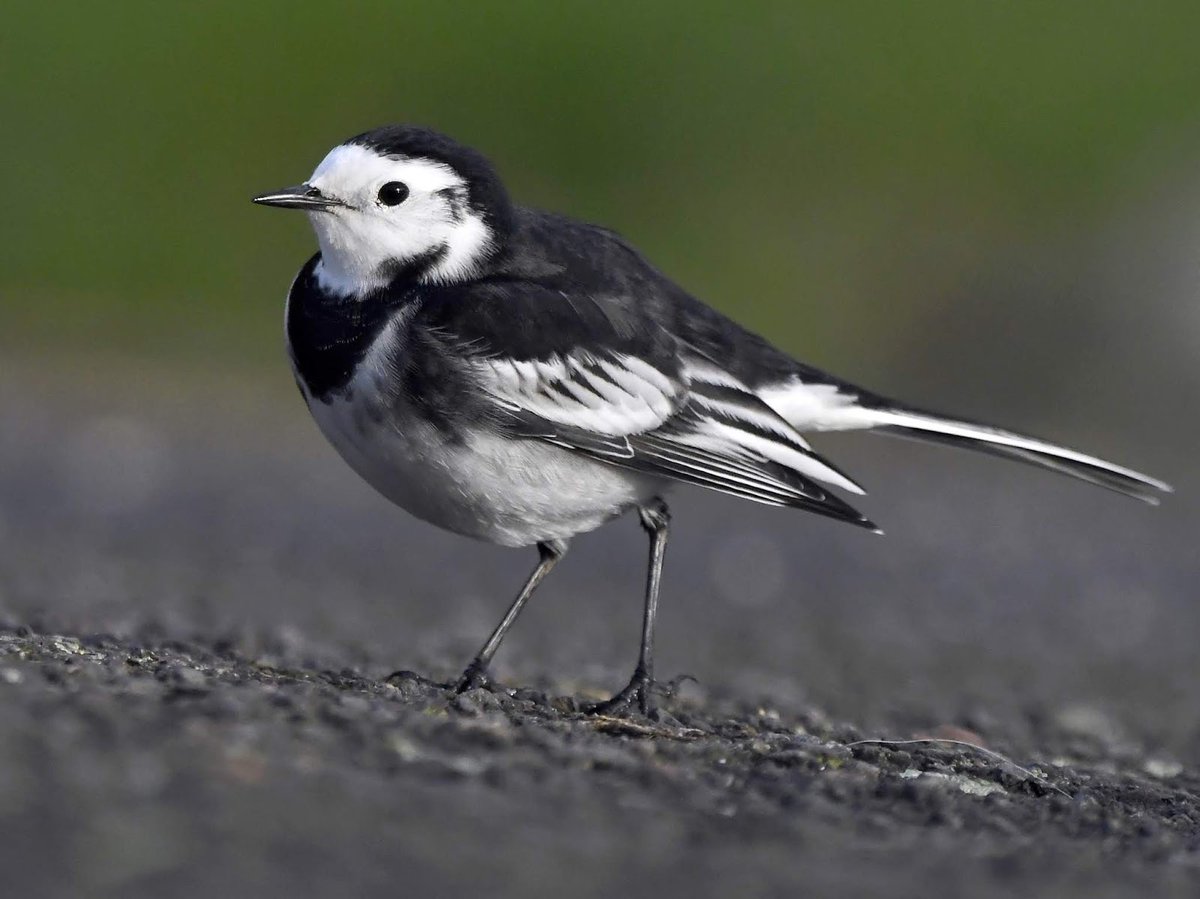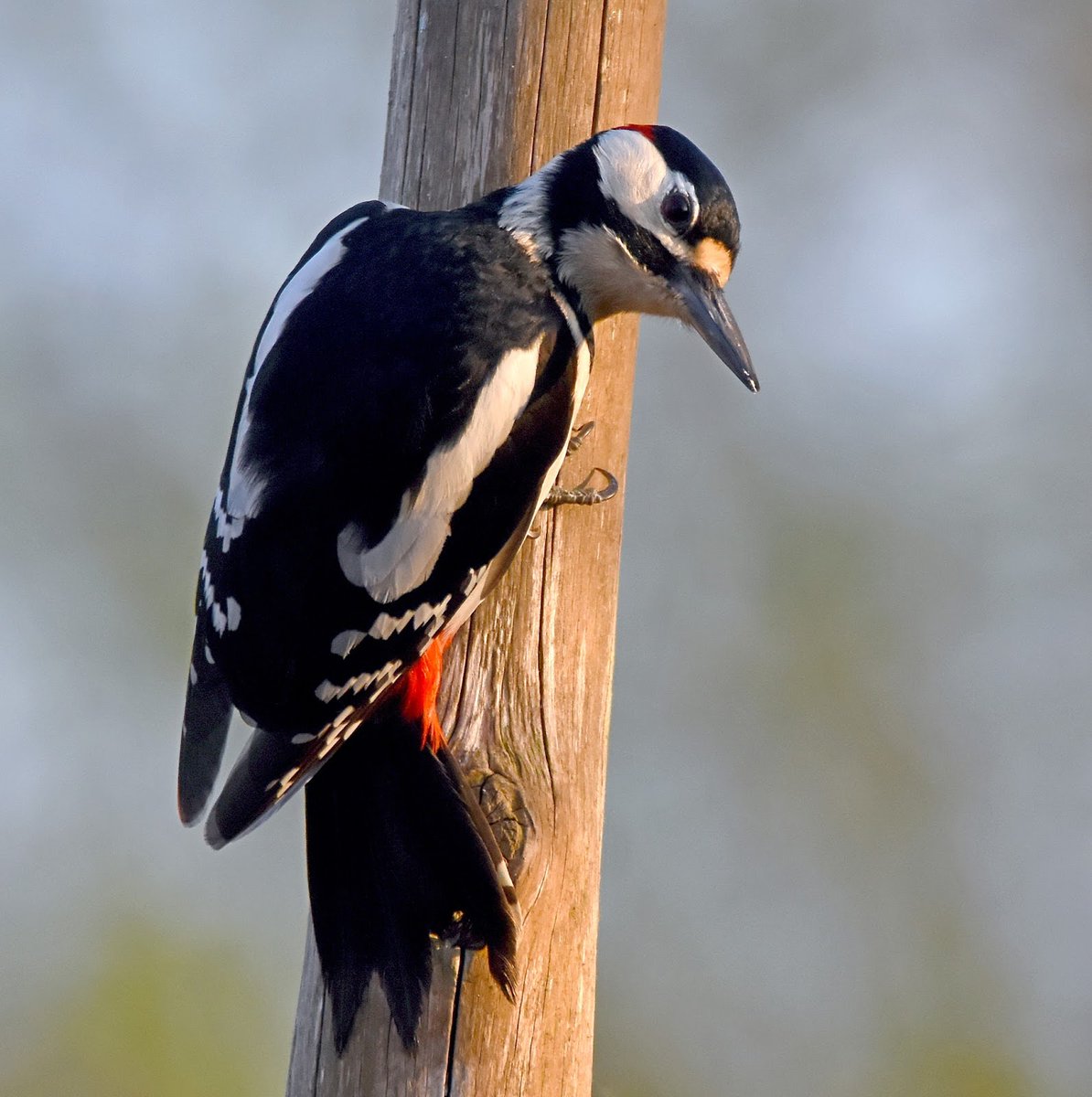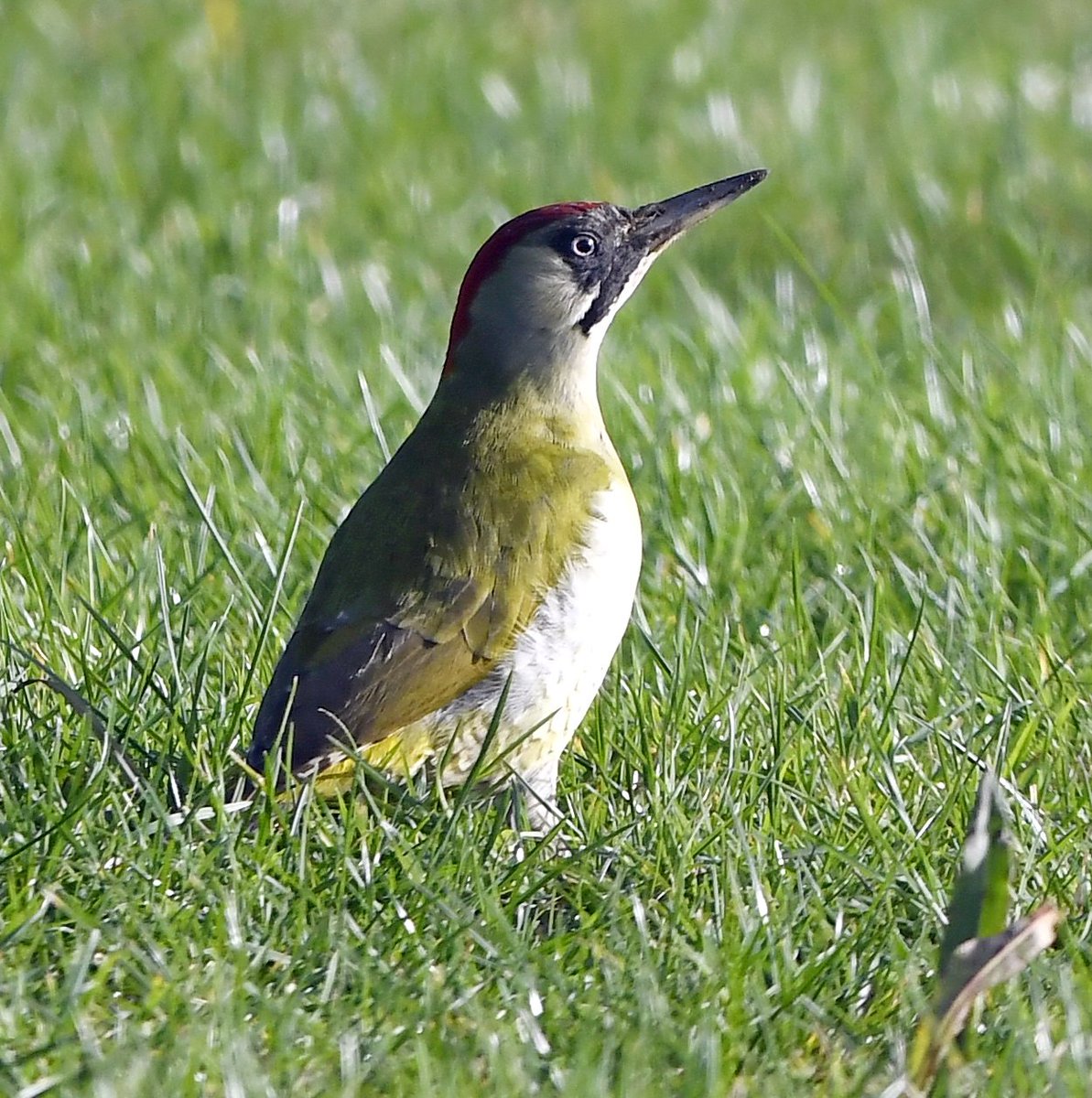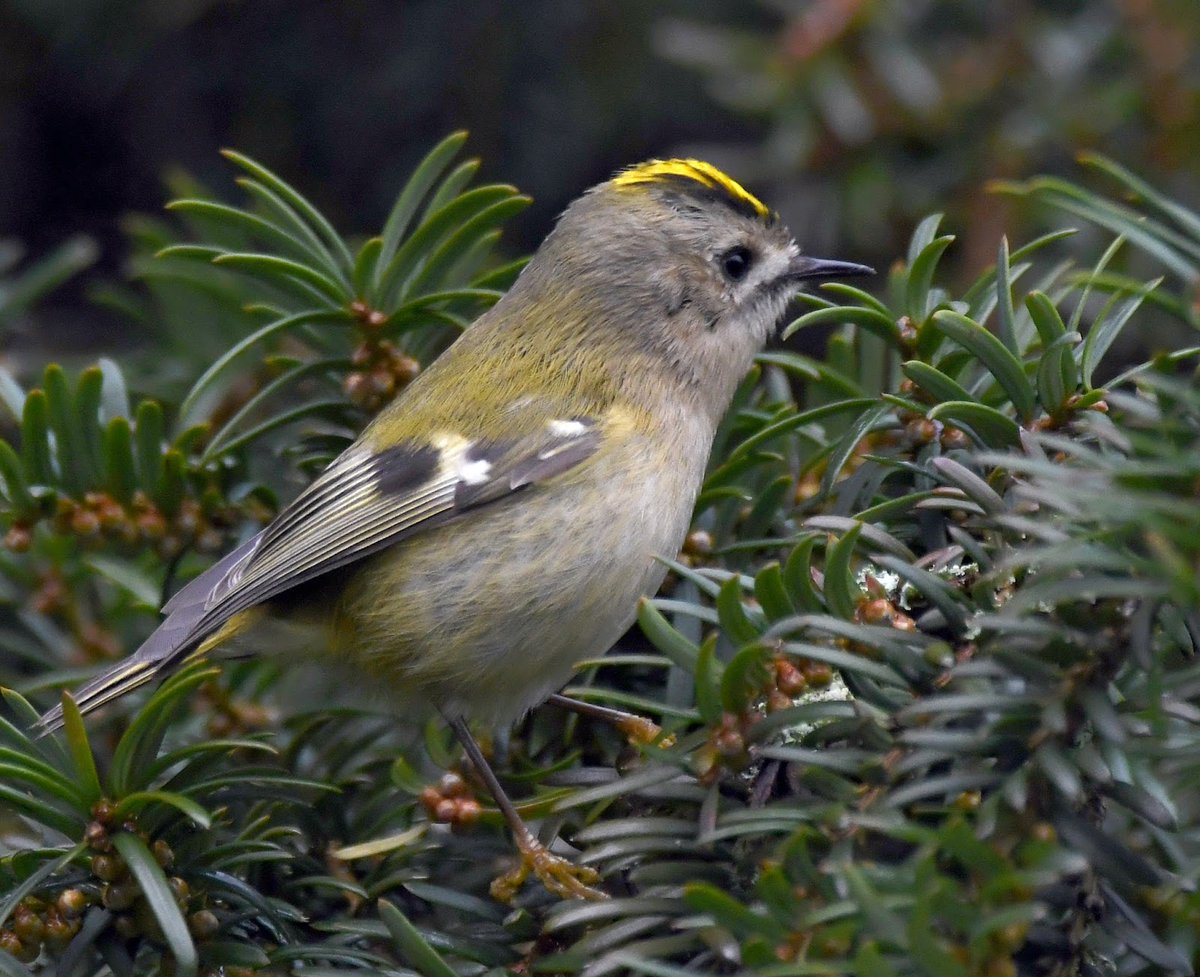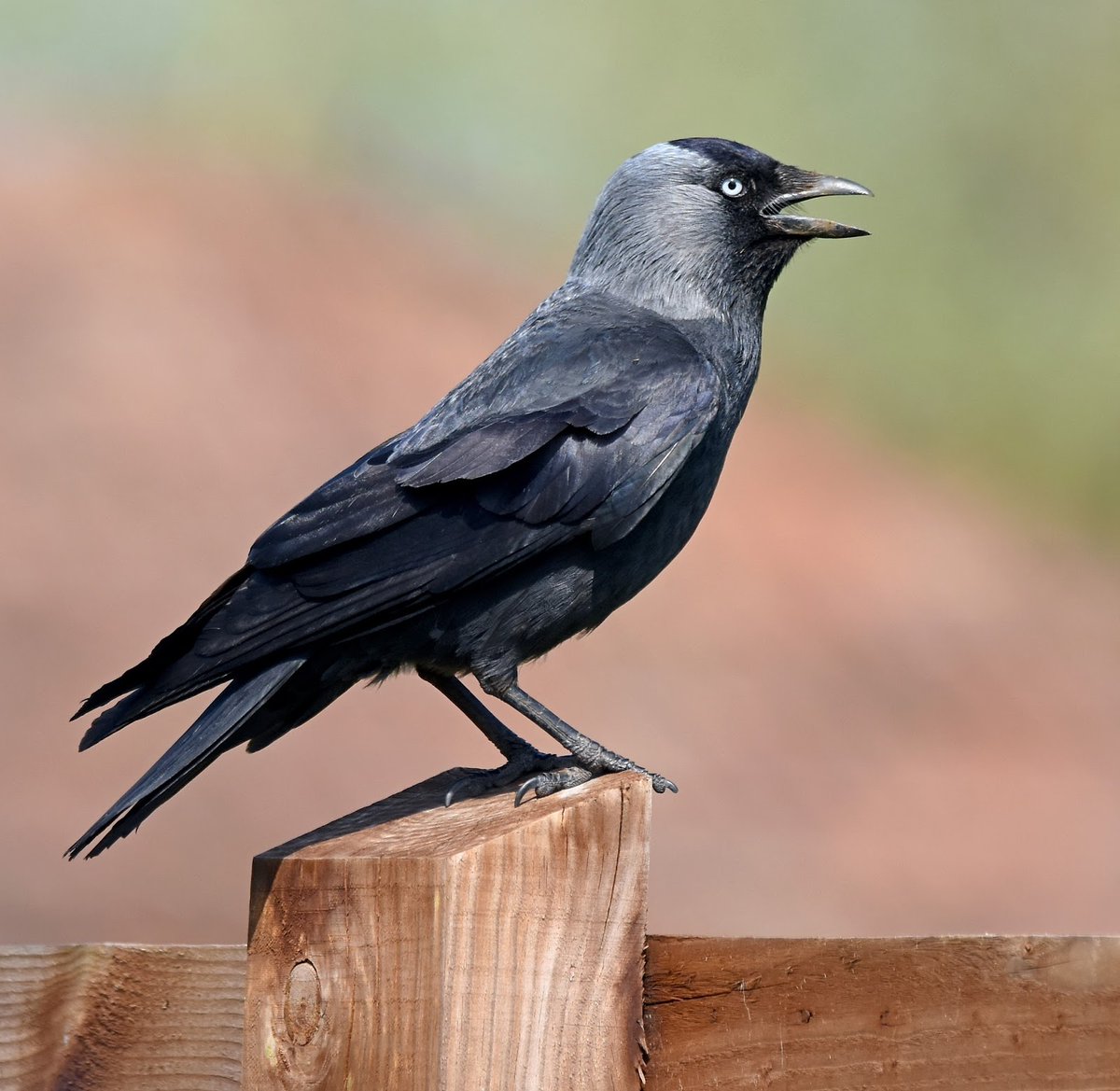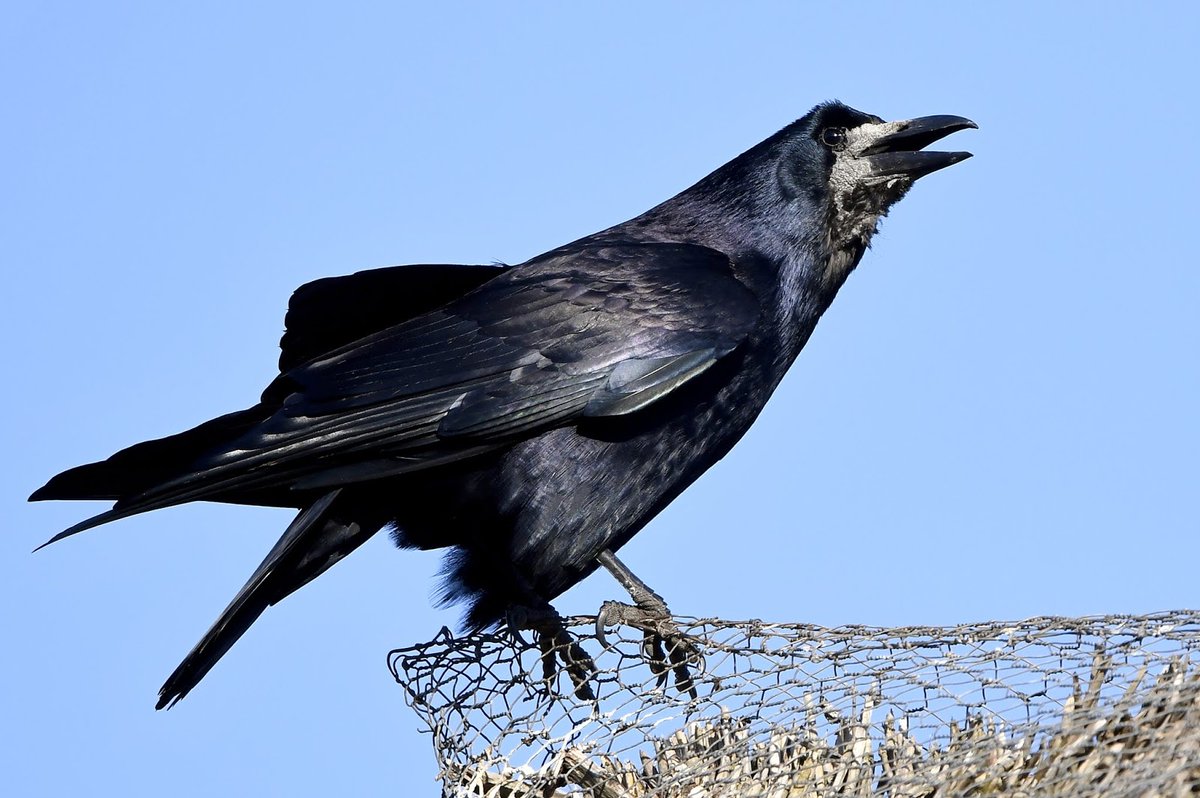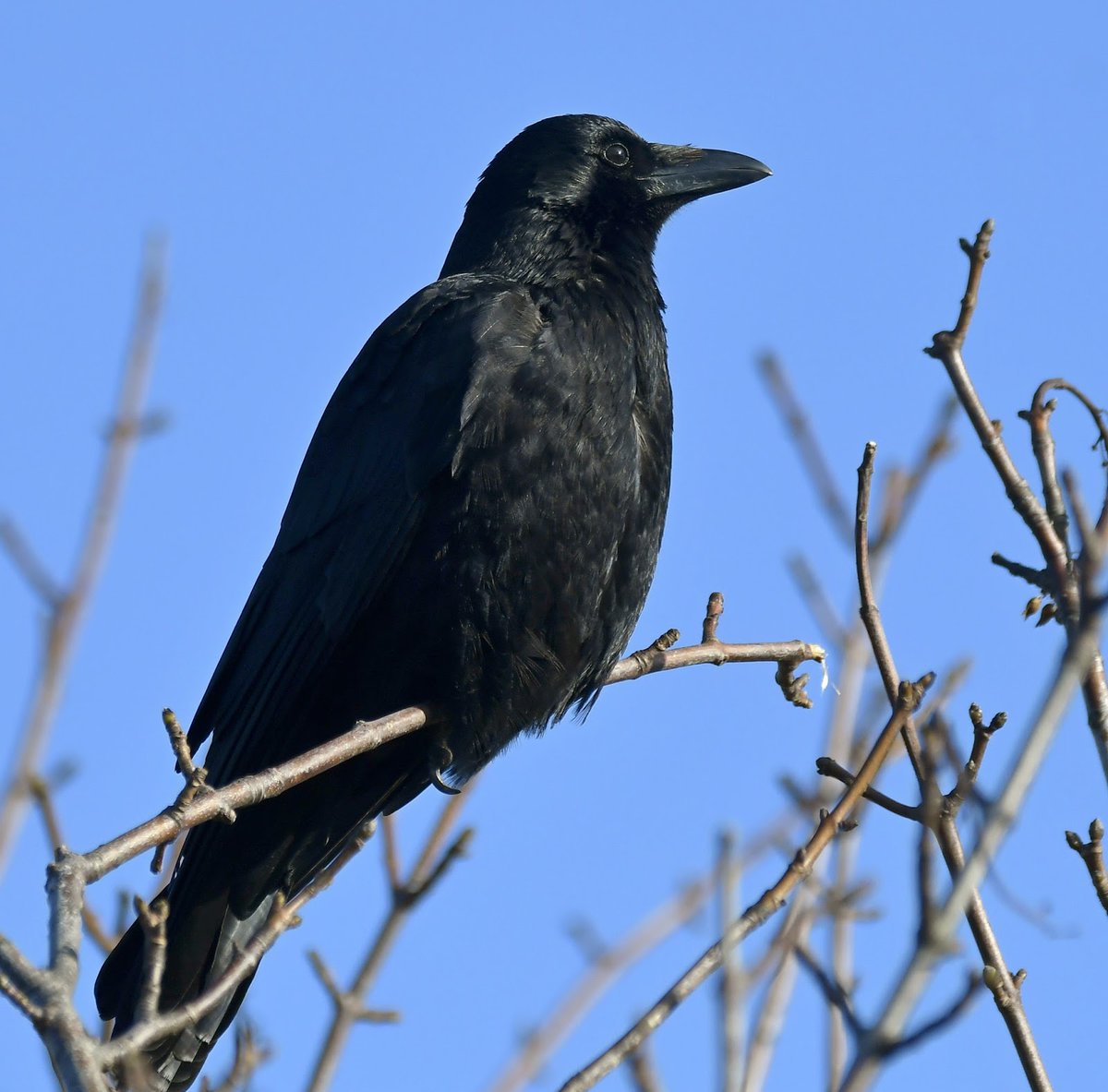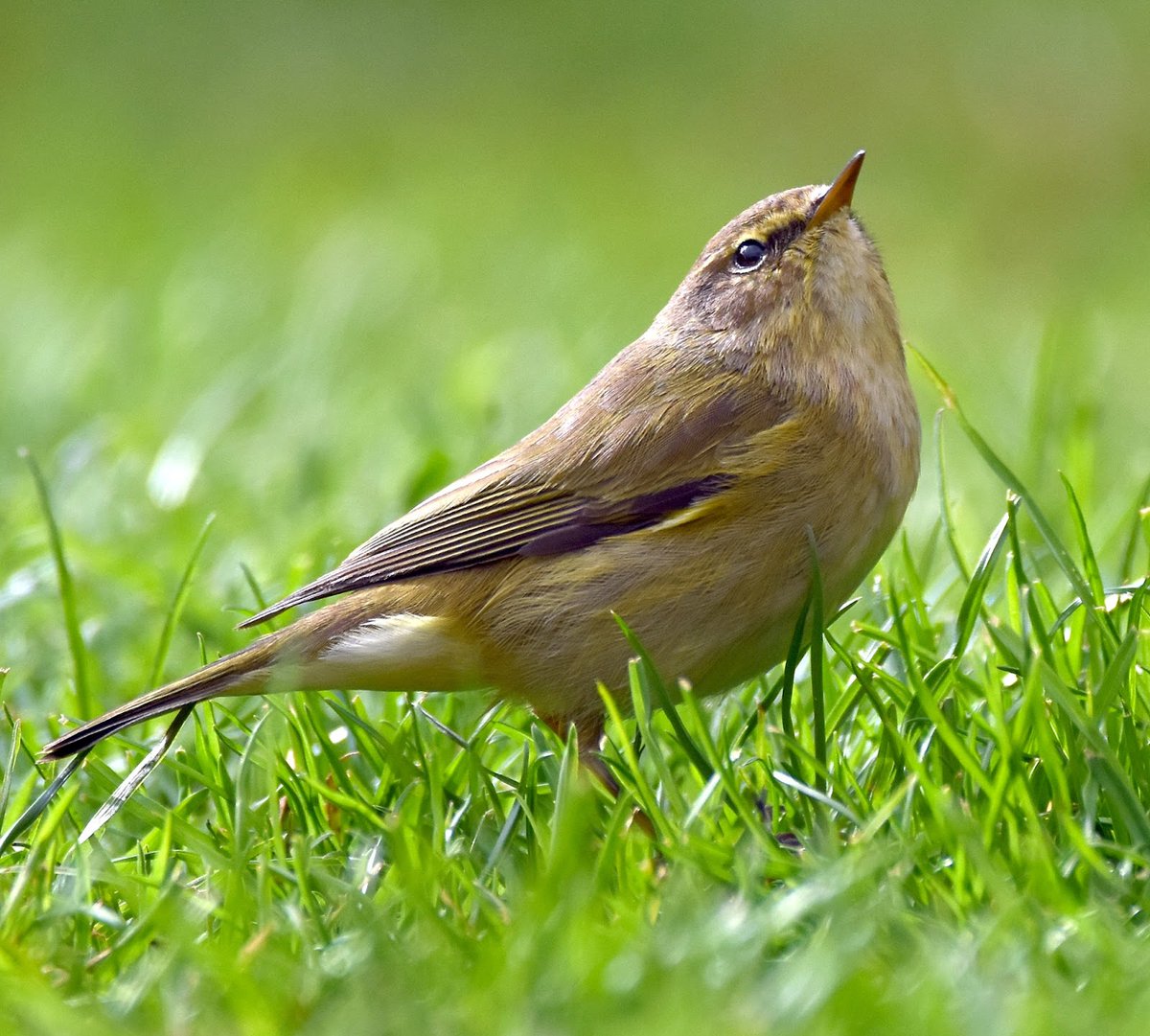If you are self-isolating, one of the best things you can do to pass the time is birdwatch from your home. 

It's fun & rewarding!
In this thread I'll give some tips for attracting birds & identifying them. (With pics too!)
(With pics too!)
#SelfIsolationBirdWatch

#COVID2019


It's fun & rewarding!
In this thread I'll give some tips for attracting birds & identifying them.
 (With pics too!)
(With pics too!) #SelfIsolationBirdWatch


#COVID2019
Having a green garden greatly increases the potential for birds, but in the short term you can attract birds with food & water.
Any seed mix will do, but I find the best are sunflower hearts like these;
https://www.amazon.co.uk/dp/B07ZTPJ3NY/ref=cm_sw_r_apa_i_pyECEbRG45X8E
Birds love them & there's very little mess.

Any seed mix will do, but I find the best are sunflower hearts like these;
https://www.amazon.co.uk/dp/B07ZTPJ3NY/ref=cm_sw_r_apa_i_pyECEbRG45X8E
Birds love them & there's very little mess.


Water is just as important as food, and not only for drinking.
You can use dustbin lids or plant pot bases as bird baths, as modelled here by this Robin in my garden.
Bathing birds are very entertaining to watch, as they splash about!
#SelfIsolationBirdWatch
You can use dustbin lids or plant pot bases as bird baths, as modelled here by this Robin in my garden.

Bathing birds are very entertaining to watch, as they splash about!

#SelfIsolationBirdWatch

Shortly, I'll start uploading photos in this thread of birds you might see in your gardens.
Why not do a daily list?
It will be interesting to note the birds you see in your gardens from day to day!
If you can, take pics & share with the hashtag #SelfIsolationBirdWatch

Why not do a daily list?
It will be interesting to note the birds you see in your gardens from day to day!

If you can, take pics & share with the hashtag #SelfIsolationBirdWatch

Blackbird. 
Male is a handsome black bird (hence the name!)
Female is a mottled brown.
The male has a beautiful song.
Common in gardens, especially ones with lawns.
#SelfIsolationBirdWatch

Male is a handsome black bird (hence the name!)
Female is a mottled brown.
The male has a beautiful song.
Common in gardens, especially ones with lawns.
#SelfIsolationBirdWatch

House Sparrow. 
Male is darker, with a brown and grey head and black 'bib'. Female mostly buffy-brown.
Often seen in small colonies.
Like hedges and thick bushes for cover.
Enjoy chirping!
#SelfIsolationBirdWatch

Male is darker, with a brown and grey head and black 'bib'. Female mostly buffy-brown.
Often seen in small colonies.
Like hedges and thick bushes for cover.
Enjoy chirping!

#SelfIsolationBirdWatch

Song Thrush
Sadly declining, these spotty chested beauties like lawns where they can hunt for worms.
They also eat snails, and use rocks as an anvil to smash their shells against to get at the tasty creature inside!
Famous for their gorgeous song.
#SelfIsolationBirdWatch

Sadly declining, these spotty chested beauties like lawns where they can hunt for worms.
They also eat snails, and use rocks as an anvil to smash their shells against to get at the tasty creature inside!
Famous for their gorgeous song.

#SelfIsolationBirdWatch

Dunnock
A Sparrow-sized bird, quite secretive & easily missed as they hop about under hedges. They rarely visit bird tables, preferring to pick up food that drops underneath them
They have a lovely song, often delivered in view at the top of a hedge
#SelfIsolationBirdWatch

A Sparrow-sized bird, quite secretive & easily missed as they hop about under hedges. They rarely visit bird tables, preferring to pick up food that drops underneath them
They have a lovely song, often delivered in view at the top of a hedge
#SelfIsolationBirdWatch

Blue Tit 
One of the most familiar and brightly coloured garden visitors, they enjoy sunflower hearts, peanuts and fat and seed mix. When they can, they arrive quickly, grab a seed, and then retreat to cover to eat it.
#SelfIsolationBirdWatch

One of the most familiar and brightly coloured garden visitors, they enjoy sunflower hearts, peanuts and fat and seed mix. When they can, they arrive quickly, grab a seed, and then retreat to cover to eat it.
#SelfIsolationBirdWatch

Great Tit
Superficially similar to a Blue Tit, but larger (about the size of a Sparrow) with no blue in their plumage.
Black and white face, and a distinctive black strip running down the centre of their yellow belly.
Song is 'Teacher teacher'
#SelfIsolationBirdWatch

Superficially similar to a Blue Tit, but larger (about the size of a Sparrow) with no blue in their plumage.
Black and white face, and a distinctive black strip running down the centre of their yellow belly.
Song is 'Teacher teacher'
#SelfIsolationBirdWatch

Coal Tit. 
Small Tit, usually seen in ones or twos in the garden. They have a peachy coloured belly & flank, and a white patch on the back of their neck.
Rather fond of pine trees.
#SelfIsolationBirdWatch

Small Tit, usually seen in ones or twos in the garden. They have a peachy coloured belly & flank, and a white patch on the back of their neck.
Rather fond of pine trees.
#SelfIsolationBirdWatch

Long Tailed Tit. 
Cute tiny birds, usually wandering the countryside in small flocks, constantly calling to each other.
They visit gardens looking for bugs and spiders, but will visit feeders and bird tables and especially like fat and seed mix.
#SelfIsolationBirdWatch

Cute tiny birds, usually wandering the countryside in small flocks, constantly calling to each other.
They visit gardens looking for bugs and spiders, but will visit feeders and bird tables and especially like fat and seed mix.
#SelfIsolationBirdWatch

Wren. 
Tiny bird, often with a cocked tail. Has a very loud song!
Easily missed, but is actually the most common bird in the UK.
Doesn't visit bird tables. Feeds on insects and Spiders.
#SelfIsolationBirdWatch

Tiny bird, often with a cocked tail. Has a very loud song!
Easily missed, but is actually the most common bird in the UK.
Doesn't visit bird tables. Feeds on insects and Spiders.
#SelfIsolationBirdWatch

Robin. 
Very familiar and well loved, no identification tips required!
Can be aggressive in gardens, chasing away other birds.
Another bird with a beautiful song.
#SelfIsolationBirdWatch

Very familiar and well loved, no identification tips required!

Can be aggressive in gardens, chasing away other birds.
Another bird with a beautiful song.
#SelfIsolationBirdWatch

Chaffinch 
Male is a handsome red/pink, with black, white & yellow wings, bluey grey crown and green rump.
Female is a buffy colour.
Chaffinches love Sunflower hearts and other seeds. Often hover for a second or 2 before landing on bird tables.
#SelfIsolationBirdWatch

Male is a handsome red/pink, with black, white & yellow wings, bluey grey crown and green rump.
Female is a buffy colour.
Chaffinches love Sunflower hearts and other seeds. Often hover for a second or 2 before landing on bird tables.
#SelfIsolationBirdWatch

Goldfinch. 
Increasingly common in UK gardens, usually arriving at feeders in small bickering groups.
The beautiful red face is distinctive, as is the yellow/gold stripe on their wings, which gives them their name.
#SelfIsolationBirdWatch

Increasingly common in UK gardens, usually arriving at feeders in small bickering groups.
The beautiful red face is distinctive, as is the yellow/gold stripe on their wings, which gives them their name.
#SelfIsolationBirdWatch

Greenfinch 
Previously common finch, a bad virus hit them badly, depleting their numbers.
Numbers in some places seem to be slowly recovering.
Males are a brighter green than the duller females.
They love sunflower hearts!
#SelfIsolationBirdWatch

Previously common finch, a bad virus hit them badly, depleting their numbers.
Numbers in some places seem to be slowly recovering.
Males are a brighter green than the duller females.
They love sunflower hearts!
#SelfIsolationBirdWatch

Bullfinch
You are lucky if you have Bullfinches visiting your garden!
The male is stunningly beautiful with his pinky red underparts, the female is a duller buff.
Both sexes have a black head and face and their white rump is obvious as they fly away
#SelfIsolationBirdWatch

You are lucky if you have Bullfinches visiting your garden!
The male is stunningly beautiful with his pinky red underparts, the female is a duller buff.
Both sexes have a black head and face and their white rump is obvious as they fly away
#SelfIsolationBirdWatch

Siskin 
If you're lucky, you may have these lovely little finches visiting your garden.
Smaller than Greenfinches, with more streaking in their plumage.
Males have darker areas on their head and wings. Tail is forked.
Female, as usual, is duller.
#SelfIsolationBirdWatch

If you're lucky, you may have these lovely little finches visiting your garden.
Smaller than Greenfinches, with more streaking in their plumage.
Males have darker areas on their head and wings. Tail is forked.
Female, as usual, is duller.
#SelfIsolationBirdWatch

Reed Bunting 
A bird of reedbeds & wetlands, they will travel to gardens to find food, and like various seeds, especially sunflower hearts!
Males are starting to develop their stunning black headed breeding plumage, females are a streaky delight.
#SelfIsolationBirdWatch

A bird of reedbeds & wetlands, they will travel to gardens to find food, and like various seeds, especially sunflower hearts!
Males are starting to develop their stunning black headed breeding plumage, females are a streaky delight.
#SelfIsolationBirdWatch

Blackcap.
More and more of these Summer visiting warblers are over-wintering in the UK as temperatures rise & winters are less harsh. They've taken to visiting garden feeders to help them survive.
Males have the black 'caps', females have brown ones.
#SelfIsolationBirdWatch

More and more of these Summer visiting warblers are over-wintering in the UK as temperatures rise & winters are less harsh. They've taken to visiting garden feeders to help them survive.
Males have the black 'caps', females have brown ones.
#SelfIsolationBirdWatch

Woodpigeon 
Used to be shy birds of farmland and countryside, they're now common in gardens and are very entertaining to watch as they chase each other about.
Larger than Feral Pigeons, note the white patch on the neck.
#SelfIsolationBirdWatch

Used to be shy birds of farmland and countryside, they're now common in gardens and are very entertaining to watch as they chase each other about.
Larger than Feral Pigeons, note the white patch on the neck.
#SelfIsolationBirdWatch

Collared Dove 
A dove of gardens, farmyards and parkland, their cooing is a familiar sound. Much lighter coloured than other pigeons and doves, with a distinctive collar that gives it its name. Another seed lover!
#SelfIsolationBirdwatch

A dove of gardens, farmyards and parkland, their cooing is a familiar sound. Much lighter coloured than other pigeons and doves, with a distinctive collar that gives it its name. Another seed lover!
#SelfIsolationBirdwatch

Nuthatch 
Gardens close to woodland may get visits from Nuthatches.
They often grip tree trunks, branches and bird feeders upside down, as in this photo.
They have bluey grey backs, peach bellies & black eye stripe.
#SelfIsolationBirdWatch

Gardens close to woodland may get visits from Nuthatches.
They often grip tree trunks, branches and bird feeders upside down, as in this photo.
They have bluey grey backs, peach bellies & black eye stripe.
#SelfIsolationBirdWatch

Starling 
Often arriving in gardens in noisy bickering groups, like a gang of rowdy avian teenagers, they hoover up fat & seed mix like miniature feathered vacuum cleaners!
Superficially black birds, they're actually quite colourful in good light.
#SelfIsolationBirdWatch

Often arriving in gardens in noisy bickering groups, like a gang of rowdy avian teenagers, they hoover up fat & seed mix like miniature feathered vacuum cleaners!
Superficially black birds, they're actually quite colourful in good light.
#SelfIsolationBirdWatch

Pied Wagtail 
These black and white, long tailed birds spend much of their time on the ground, chasing after bugs. They're expert fly hunters, and are a delight to watch.
#SelfIsolationBirdWatch

These black and white, long tailed birds spend much of their time on the ground, chasing after bugs. They're expert fly hunters, and are a delight to watch.
#SelfIsolationBirdWatch

Great Spotted Woodpecker 
A beautiful visitor to gardens with trees in, or close by. Often seen clinging to trunks and branches, they like peanut feeders and love seed & fat mixes.
Quite nervous & flighty, they're black & white with flashes of red.
#SelfIsolationBirdWatch

A beautiful visitor to gardens with trees in, or close by. Often seen clinging to trunks and branches, they like peanut feeders and love seed & fat mixes.
Quite nervous & flighty, they're black & white with flashes of red.
#SelfIsolationBirdWatch

Green Woodpecker 
Bigger than a Great Spotted Woodpecker, but even harder to see!
Green & yellow with some red on the head, they visit gardens with large lawns looking for their favourite food.. ants!
They have a distinctive & loud laughing call
#SelfIsolationBirdWatch

Bigger than a Great Spotted Woodpecker, but even harder to see!
Green & yellow with some red on the head, they visit gardens with large lawns looking for their favourite food.. ants!
They have a distinctive & loud laughing call
#SelfIsolationBirdWatch

Goldcrest. 
Tiny bird, super tiny!
Slightly smaller than a Wren, the most obvious feature is their gold- yellow crest that gives them their name.
Constantly on the look out for bugs & spiders, they don't visit feeders, but will visit birdbaths.
#SelfIsolationBirdWatch

Tiny bird, super tiny!
Slightly smaller than a Wren, the most obvious feature is their gold- yellow crest that gives them their name.
Constantly on the look out for bugs & spiders, they don't visit feeders, but will visit birdbaths.
#SelfIsolationBirdWatch

Jackdaw. 
Smaller than Rooks and Crows with a grey- black head.
Their call sounds like 'Jack', hence their name.
Sociable birds, normally seen in small groups. Nest in and on old buildings and in tree cavities.
#SelfIsolationBirdWatch

Smaller than Rooks and Crows with a grey- black head.
Their call sounds like 'Jack', hence their name.
Sociable birds, normally seen in small groups. Nest in and on old buildings and in tree cavities.
#SelfIsolationBirdWatch

Rook. 
About the same size as Crows, but with a distinctive grey face, which Crows lack.
They're sociable birds, nesting together in the tops of trees (rookeries). They sometimes visit gardens close to their nest sites and farmland.
#SelfIsolationBirdWatch

About the same size as Crows, but with a distinctive grey face, which Crows lack.
They're sociable birds, nesting together in the tops of trees (rookeries). They sometimes visit gardens close to their nest sites and farmland.
#SelfIsolationBirdWatch

Carrion Crow 
All black bird, with very few distinguishing features.
Actually, the fact it is so black is a distinguishing feature in itself, with only its relative, the Raven quite as black, although they're much larger & unlikely in most gardens.
#SelfIsolationBirdWatch

All black bird, with very few distinguishing features.
Actually, the fact it is so black is a distinguishing feature in itself, with only its relative, the Raven quite as black, although they're much larger & unlikely in most gardens.
#SelfIsolationBirdWatch

Chiffchaff 
Small greeny yellow warbler, known for the call that gives them their name.
Very similar to Willow Warblers, Chiffchaffs have darker legs.
They don't visit bird feeders. Unusual to see on the ground like here, normally in trees.
#SelfIsolationBirdWatch

Small greeny yellow warbler, known for the call that gives them their name.
Very similar to Willow Warblers, Chiffchaffs have darker legs.
They don't visit bird feeders. Unusual to see on the ground like here, normally in trees.

#SelfIsolationBirdWatch


 Read on Twitter
Read on Twitter